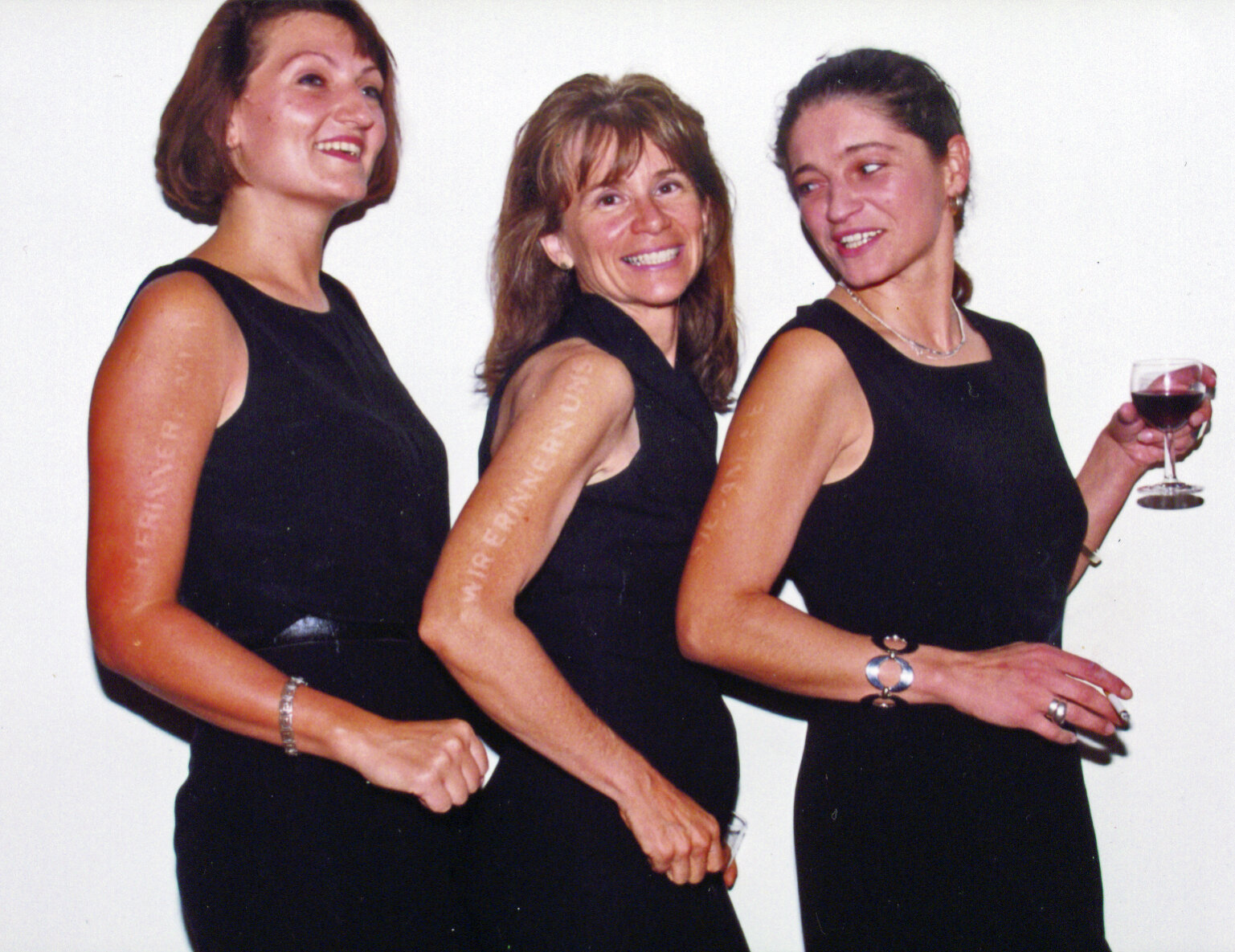
PERFORMANCES AND MORE DARK ROOMS
(or, Between Sculpture and the Body)
Light and dark. With light and perception on one side, the work can also connect to darkness, delving into the psyche, the ego, the pain we carry. And that leads to use of the body in early performative work, whether silhouettes and shadows, the voice, or the actual physical body, as in the tattoos (in German, “we remember”, above).
Flash and afterimage create a vision of seeing oneself behind bars, a literal metaphor, the self imprisoned. Often use of the figure indicates this interior pain. Like the Light Rooms, this work is also about memory and imprint - what we recall, what we cannot recall, what we’ve blocked. Another metaphor is the physical manifestation of memory, such as when the viewers’ figures are captured walking through projected light, building up in layers on a phosphorescent screen.
Much of the light-based work is less about object than perception, or seeing, and the nature of light, always changing, never staying the same. California light and perception strained through the net of New York city experience. Pain, analysis, internal experience, self-examination, meditation, and back into the light.
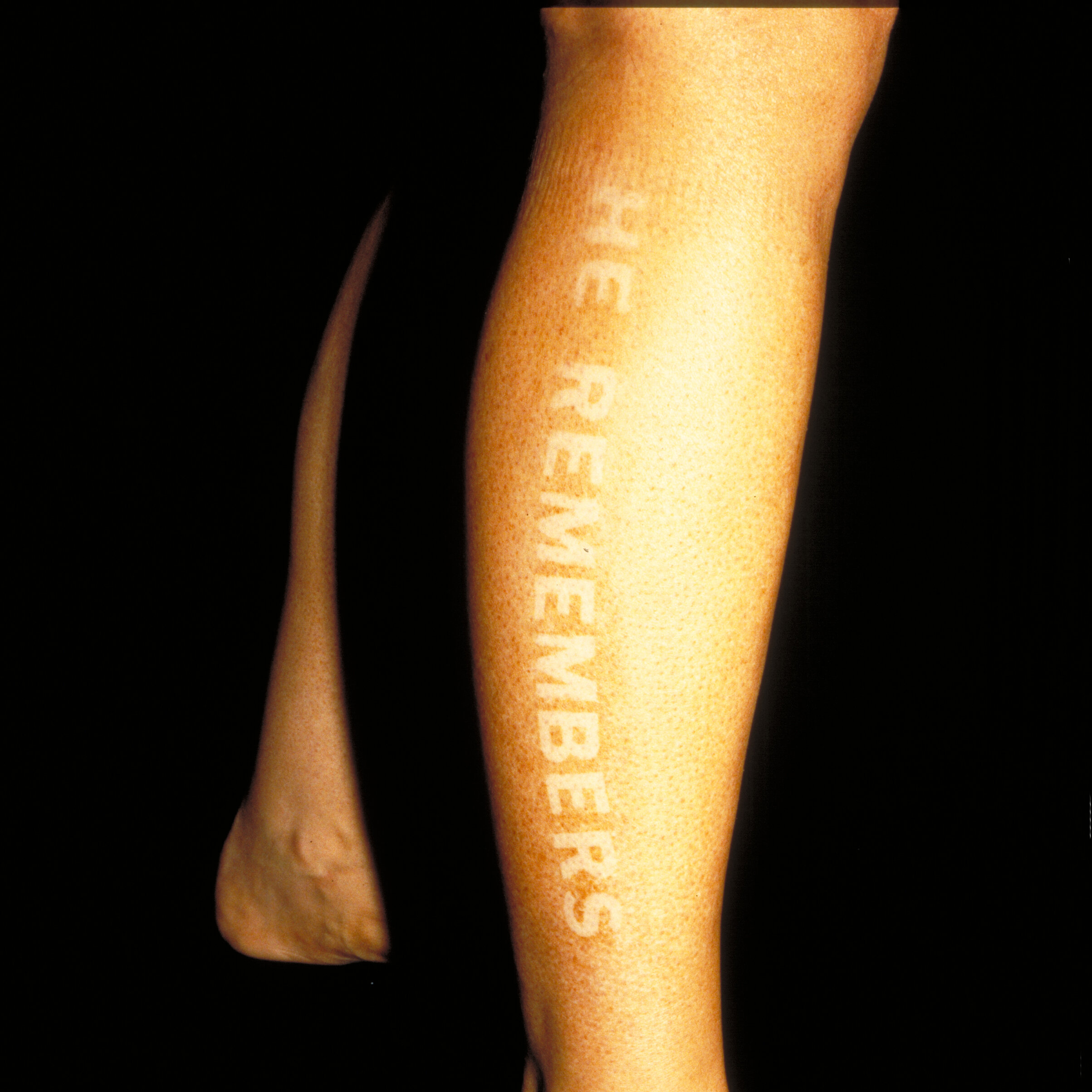
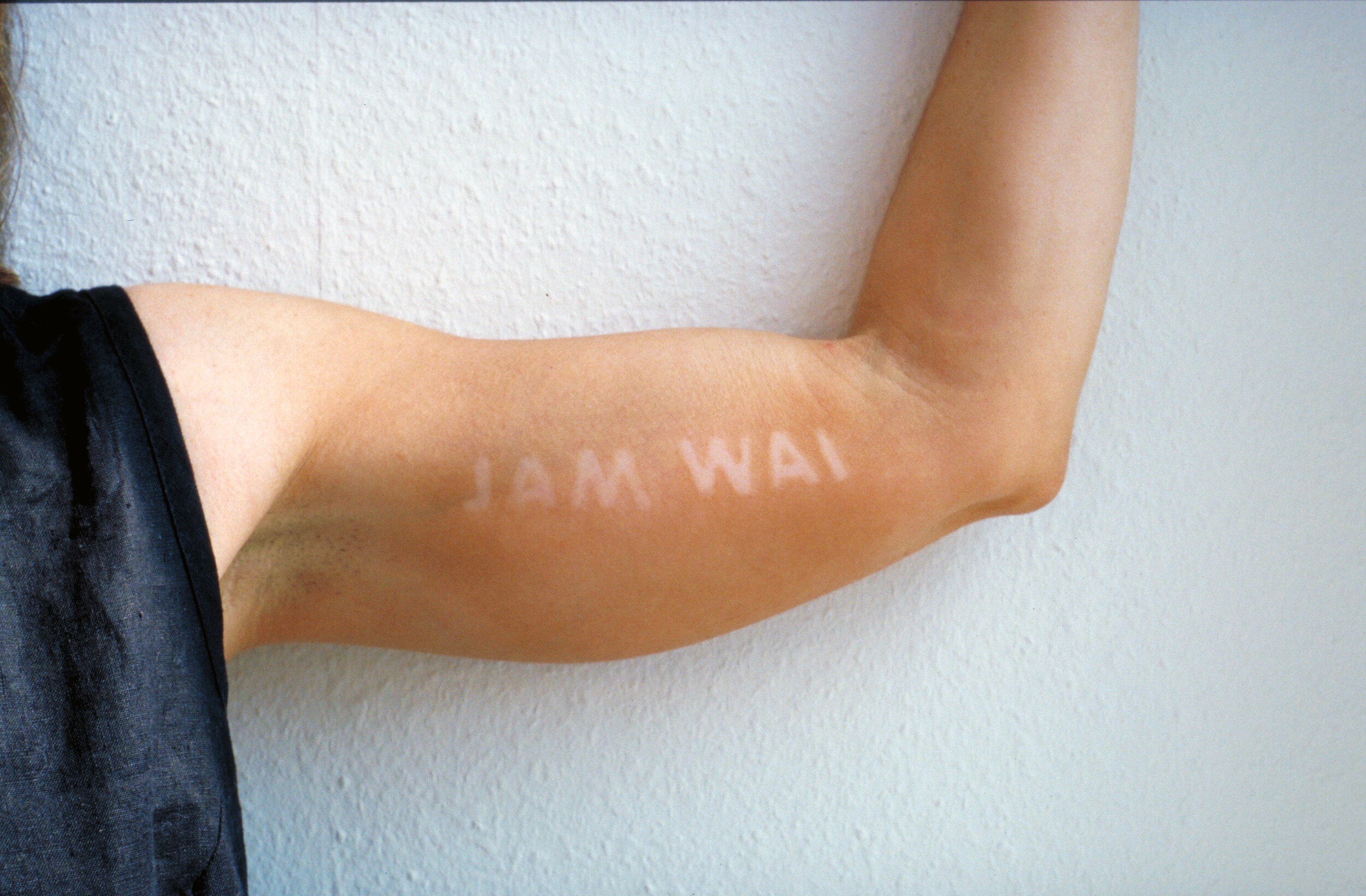
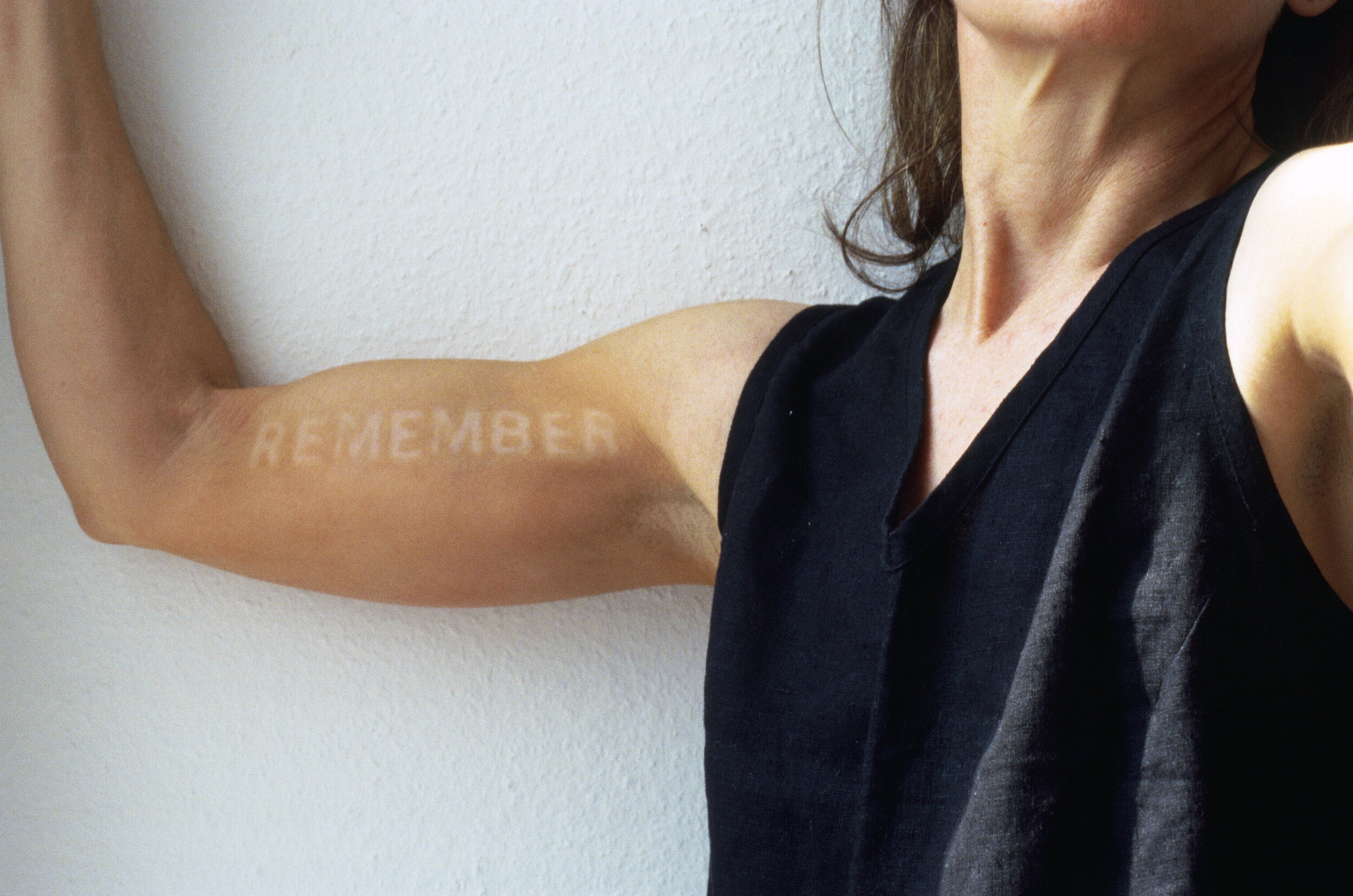
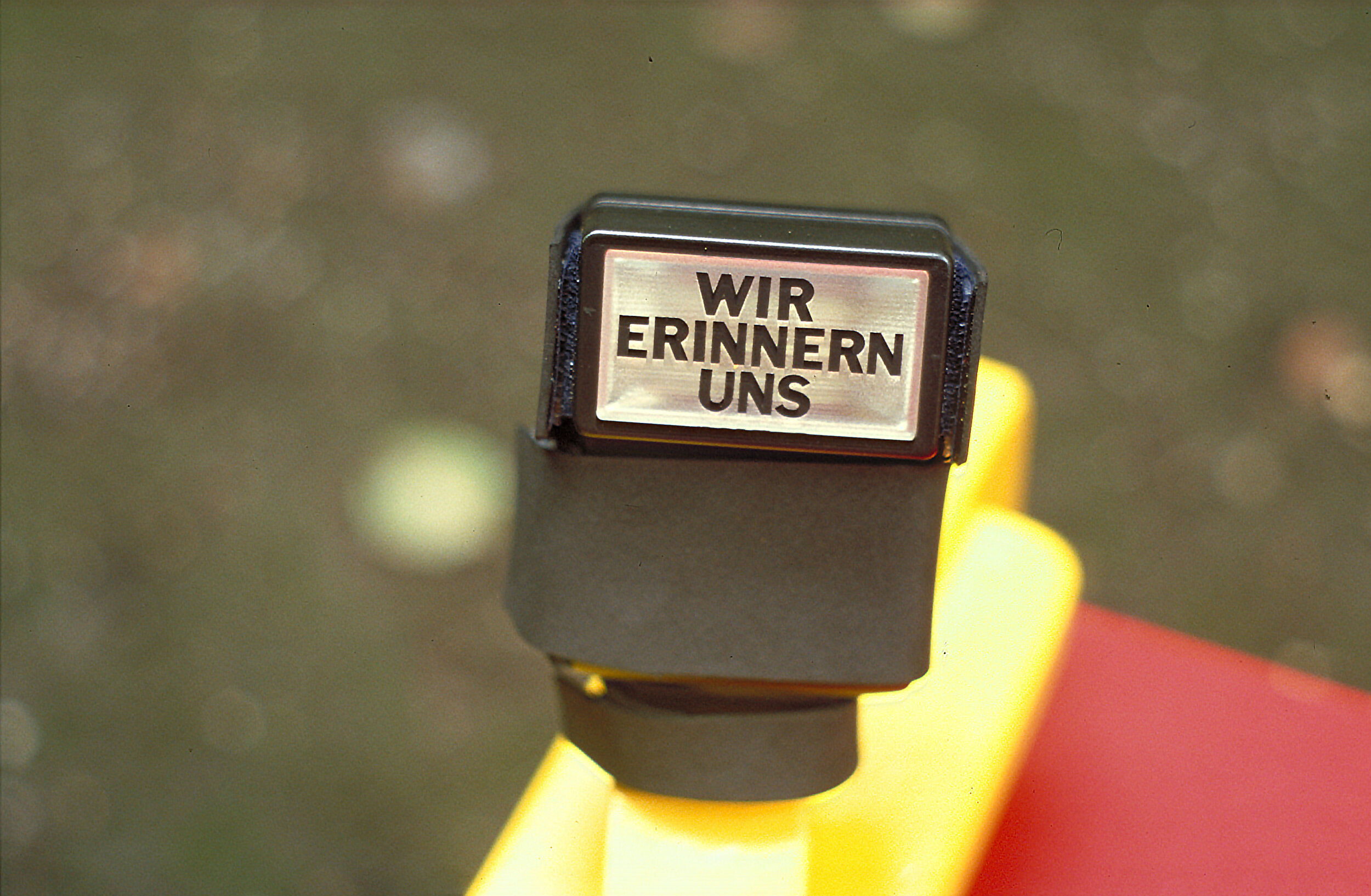
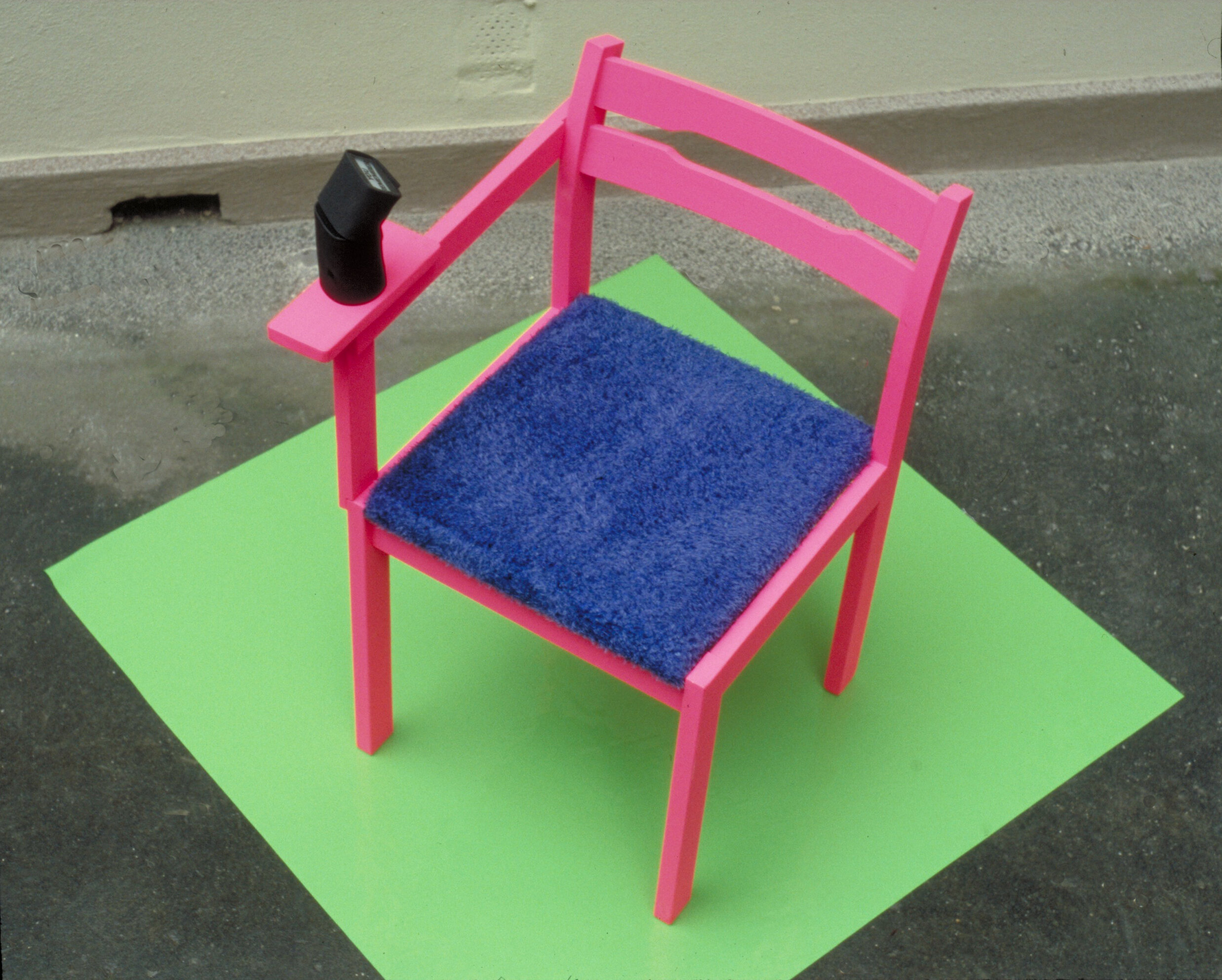
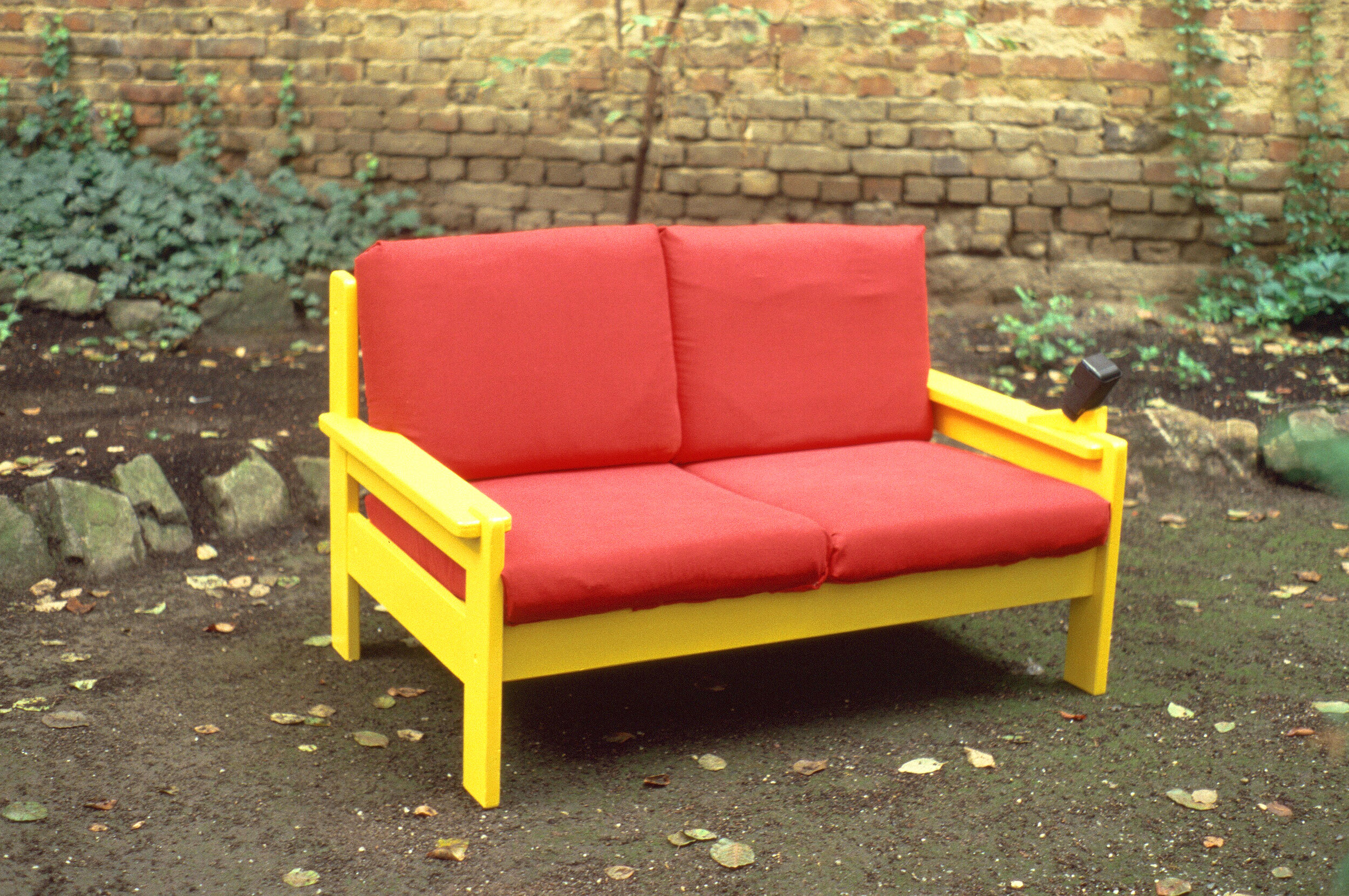
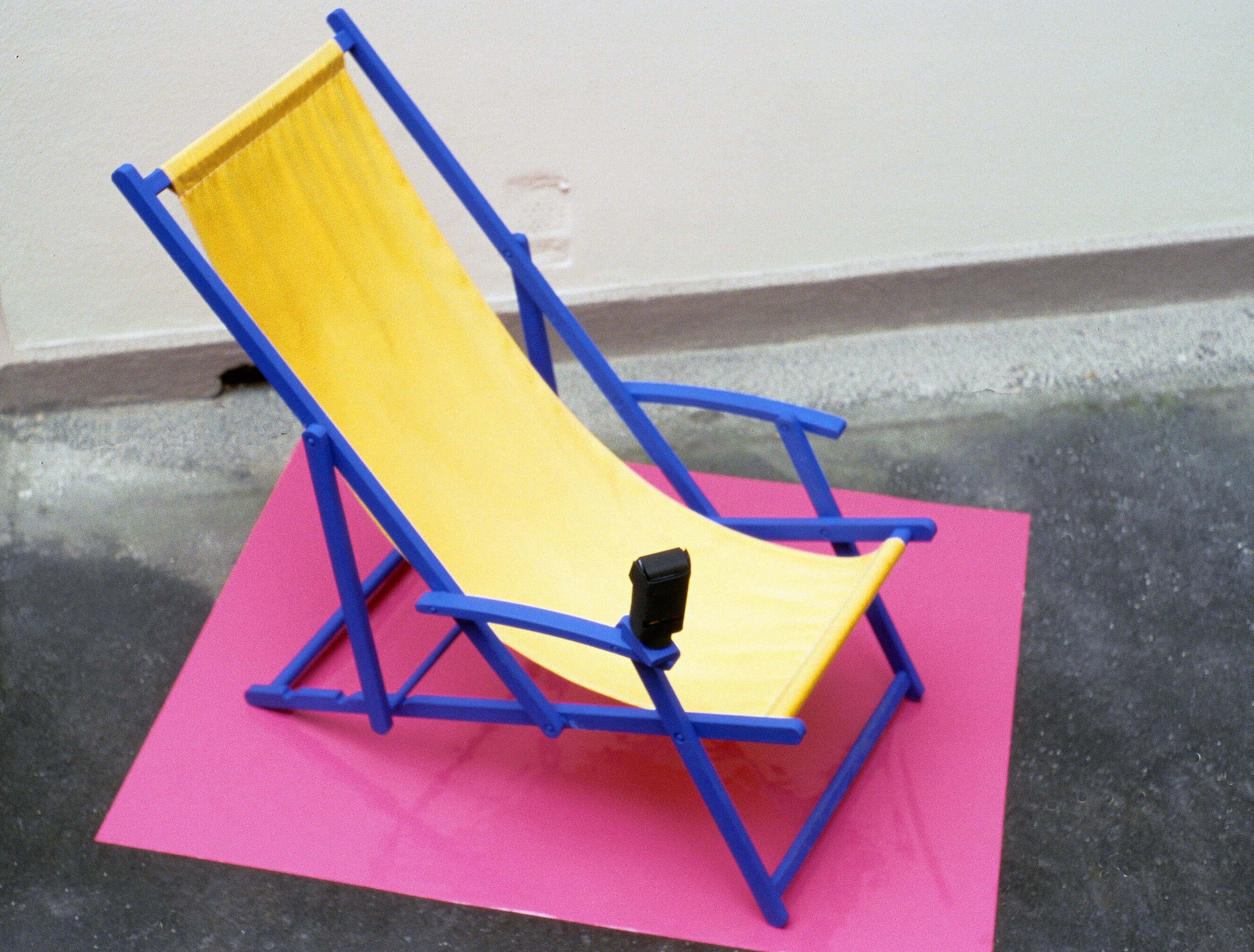
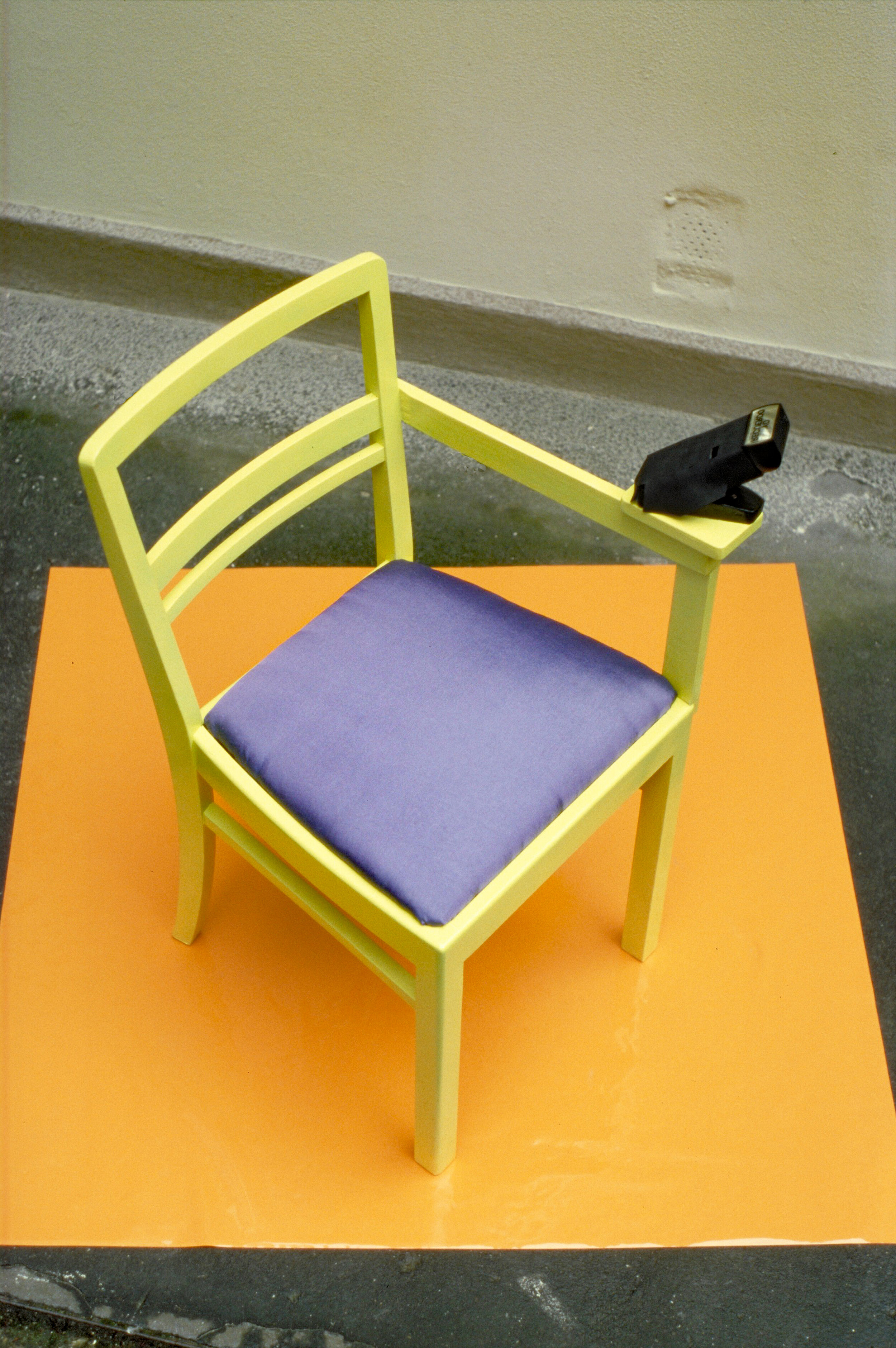
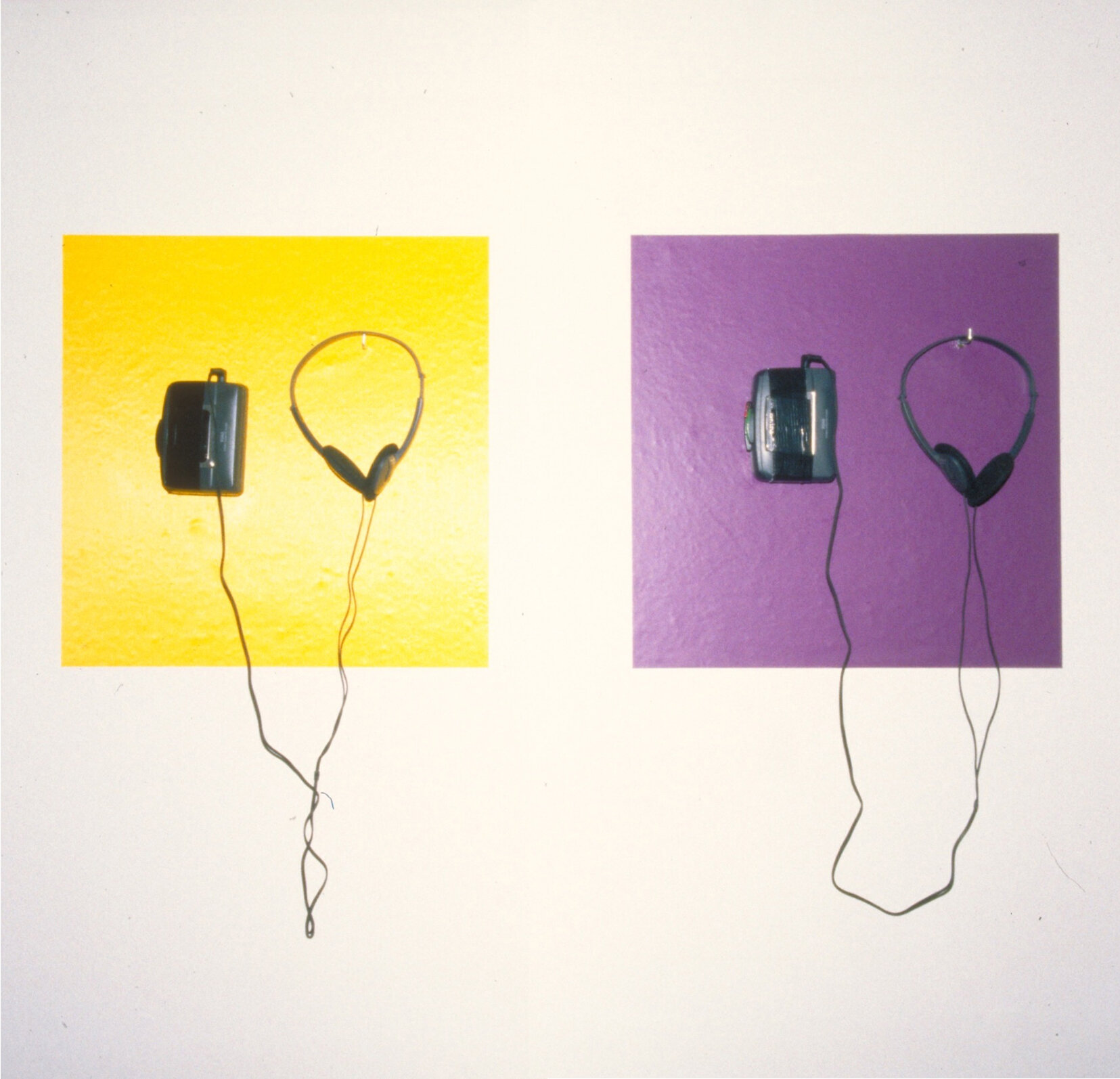
easy to remember (but so hard to forget), 1998
This work consists of two series of discrete objects and one series of body works, all shown at the same exhibition. These works share one aspect: they concretize concepts of memory, taking an abstraction and making it real, material, physical. There is a series of three chairs and a couch, each having a flash unit built into the arm. Viewers sit, then press a button to see the flash. The afterimage of the flash emblazons conjugations of the verb "to remember" (in different languages) across one’s vision. This afterimage is carried, like memory, wherever the viewers look for the next few moments. In a series of sound works, the viewer picks up headphones to hear fragments of songs, recorded as people were asked to sing them. The instruction was to try and remember the words of a song which includes the word "remember". Finally, the body works consisted of six people wearing tattoos made with photosensitivity, each tattoo being a conjugation of "to remember" in different languages. The tattoos are made with plastic stencils on the skin, the light/shadow causing the skin to "remember" the letters. At the opening of the exhibition, 6 people wore these body pieces (image at top of page).
Materials: wood, plastic, fabric, tape recorders, flash units, people
Shown at Bellevue Salle, Wiesbaden, Germany
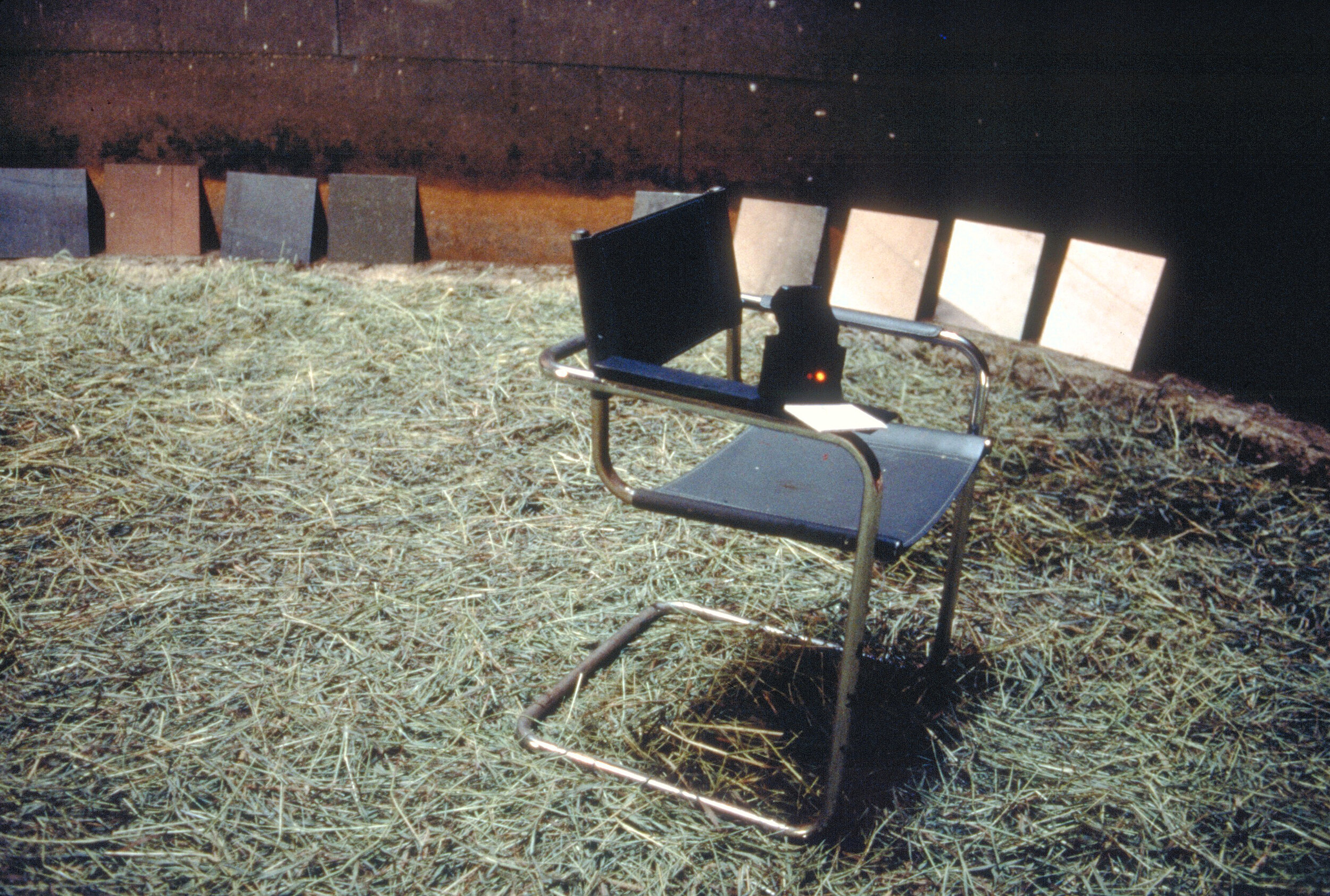
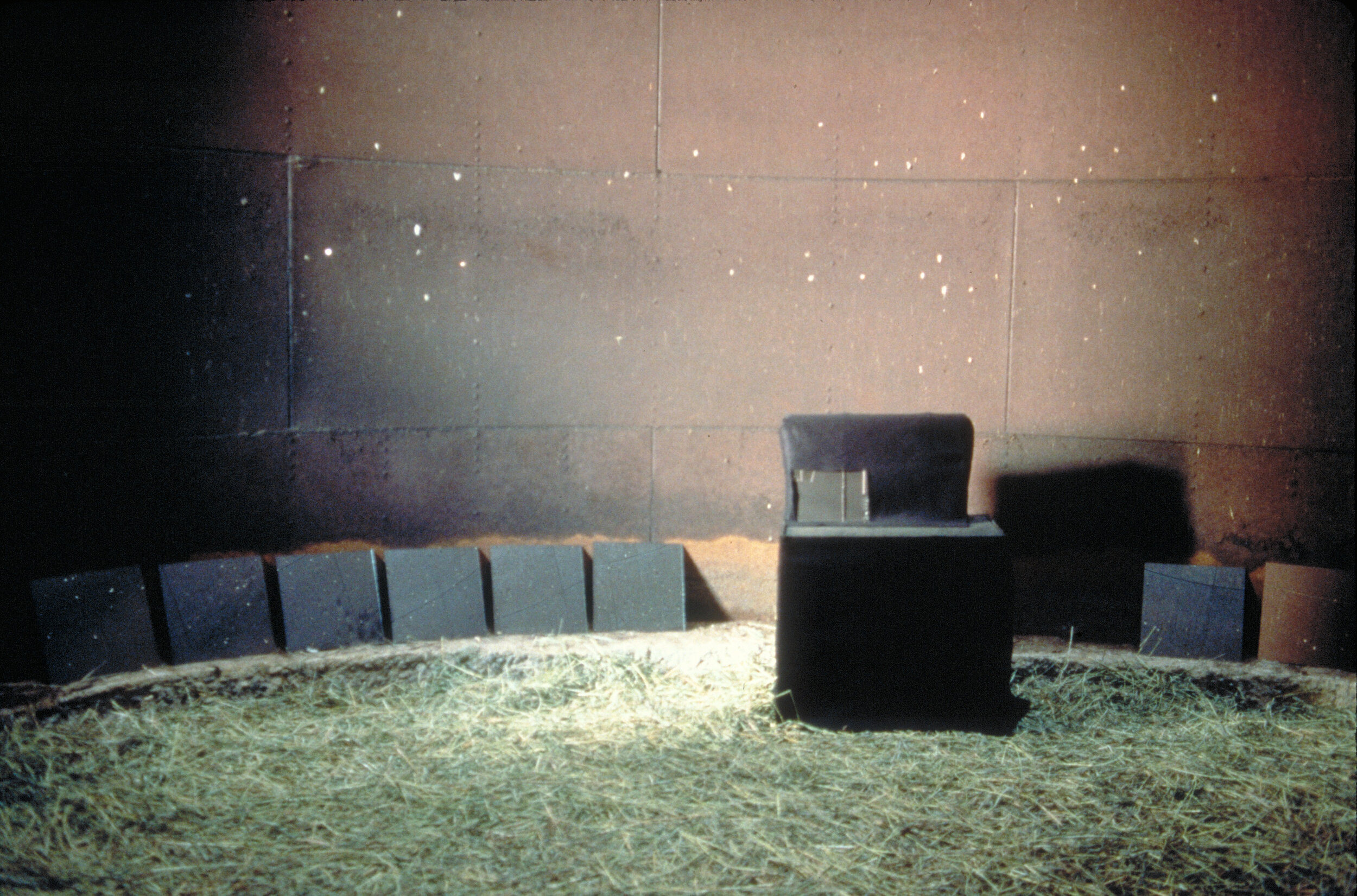
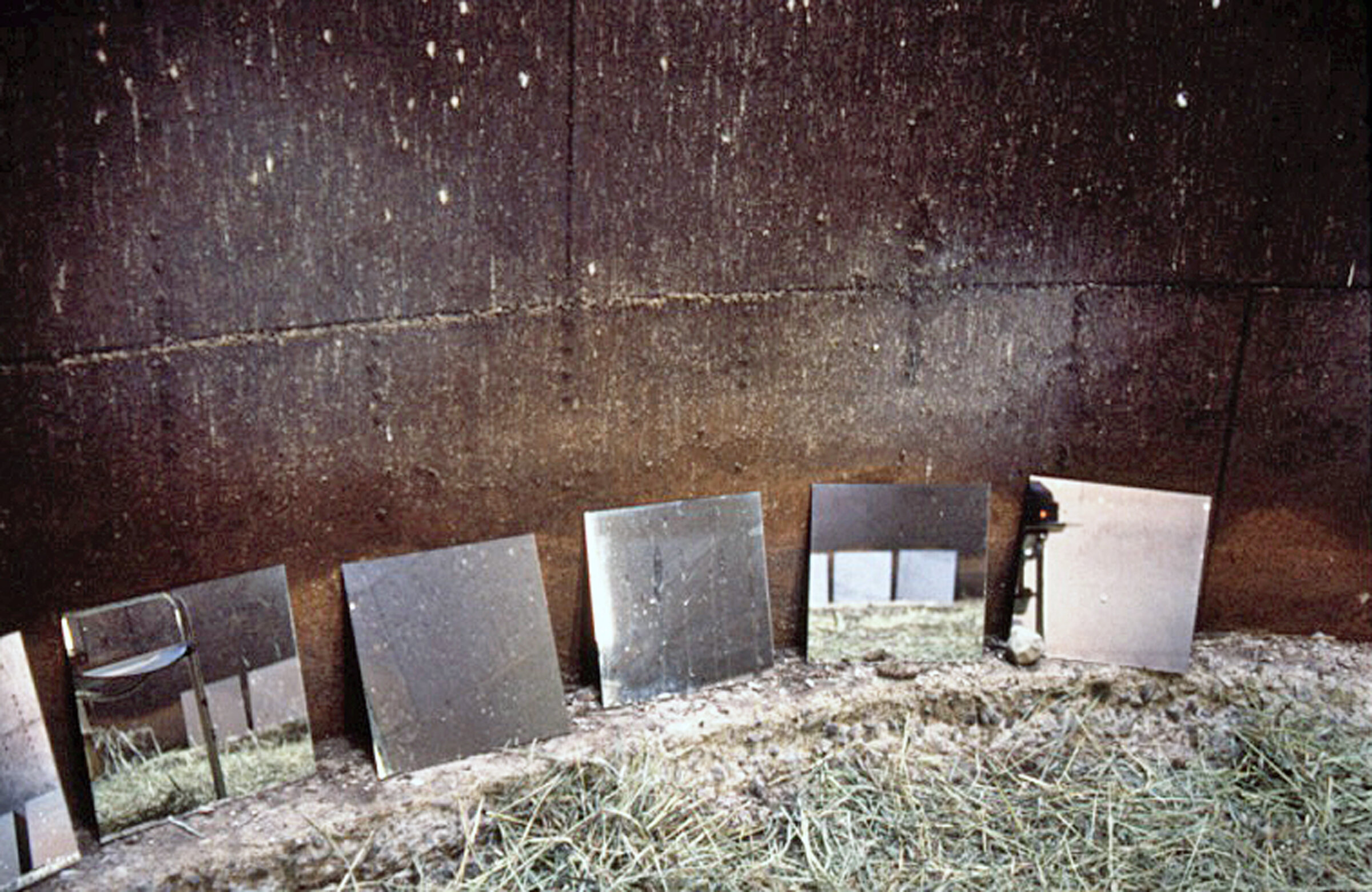
We Carry Our Prisons With Us, 1997
This site-specific sound and light installation was made in a silo, which was a giant resonating chamber. A voice repeated musical phrases recorded in the silo including the words, "Carry it with you, can't put it down”. Viewers could see different aspects of themselves reflected in mirrors placed around the inner perimeter of the silo. When seated in the chair, a viewer pushed a button causing a bright light to flash in the face, creating a visual afterimage of vertical stripes. Viewers carried this image, resembling prison bars, with them, wherever they looked, for the next few moments, hence the title.
Materials: sound equipment, mirrors, chair, flash, silo
Installation while artist in residence at Art/OMI
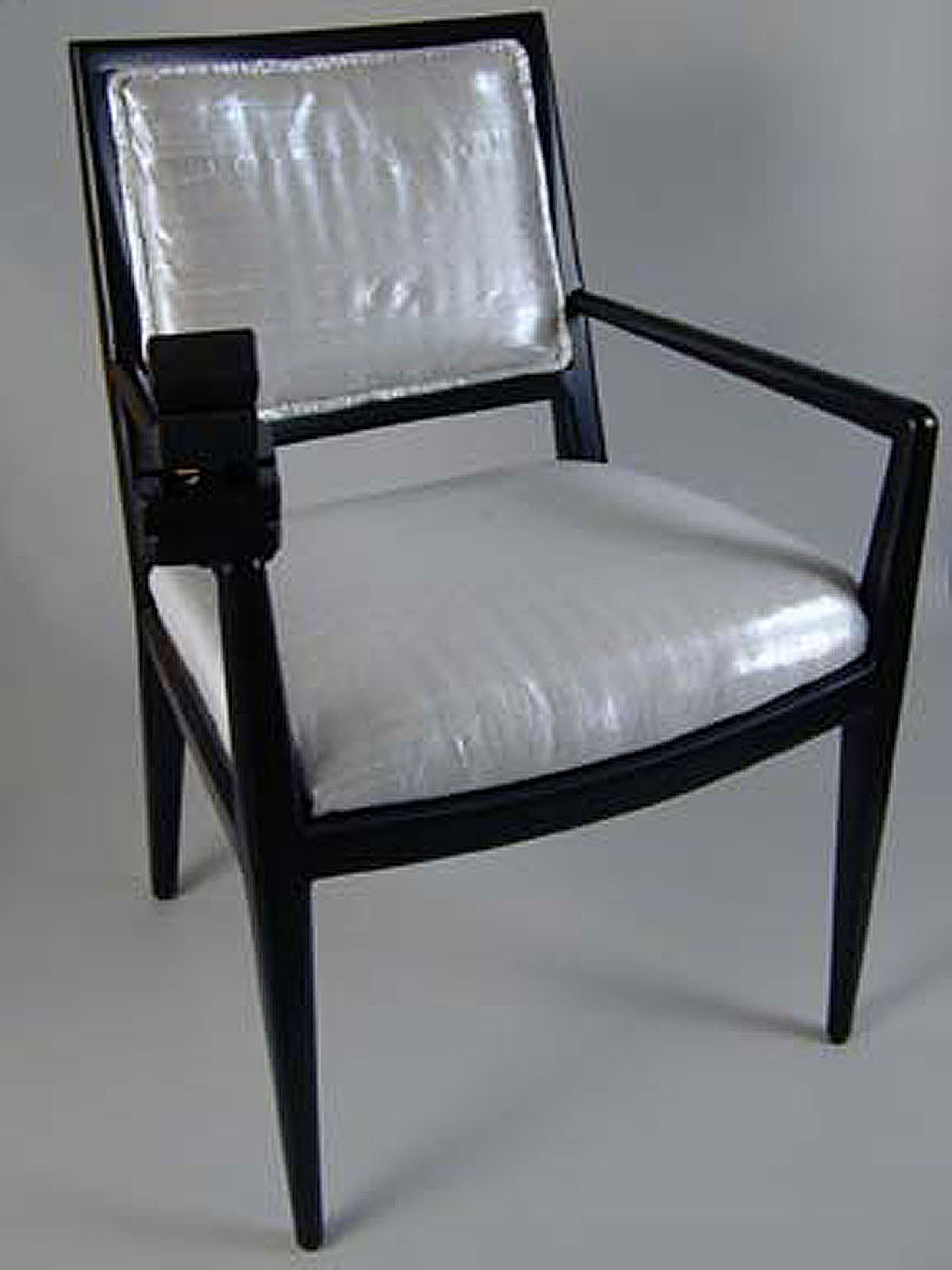
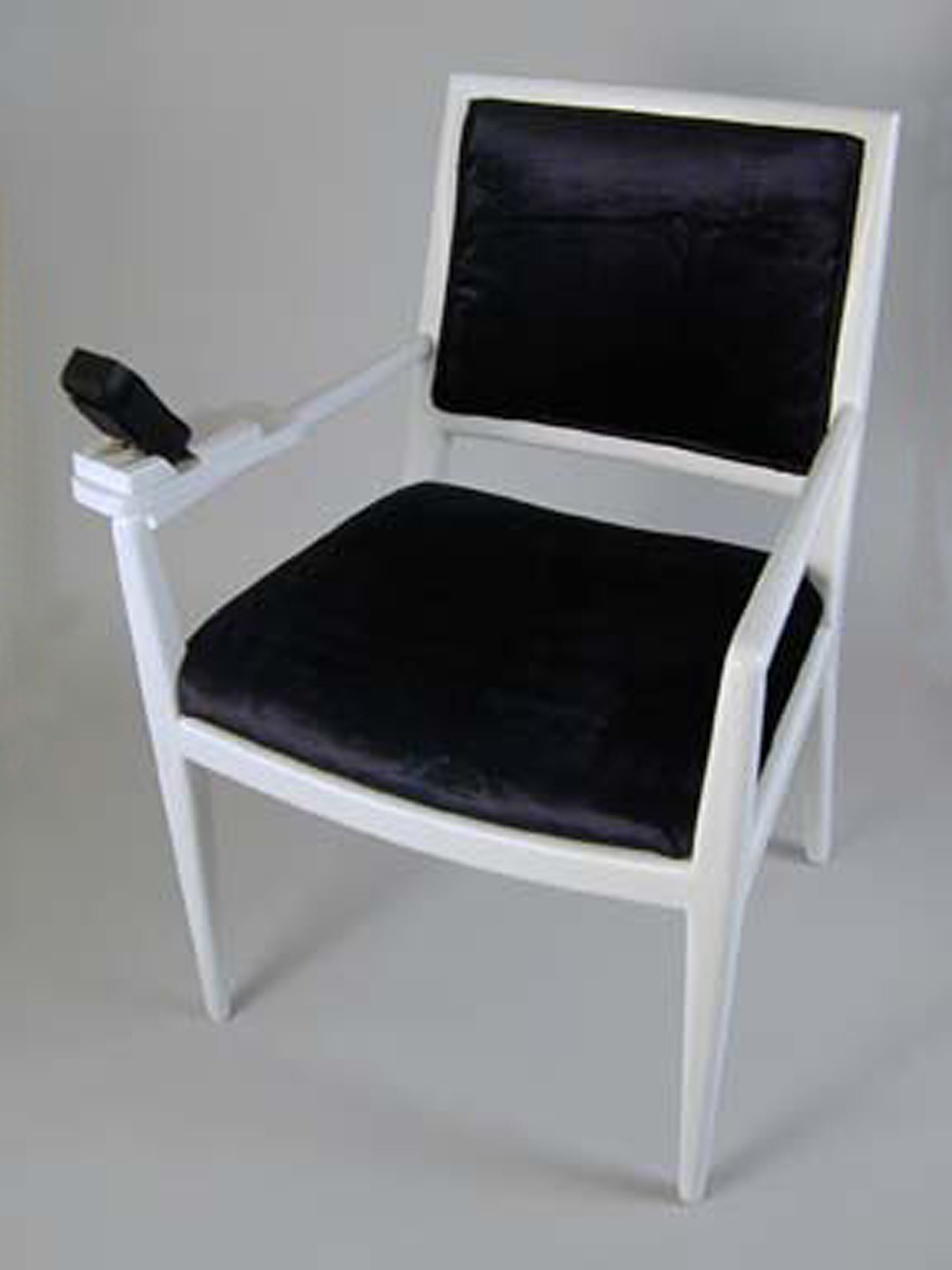

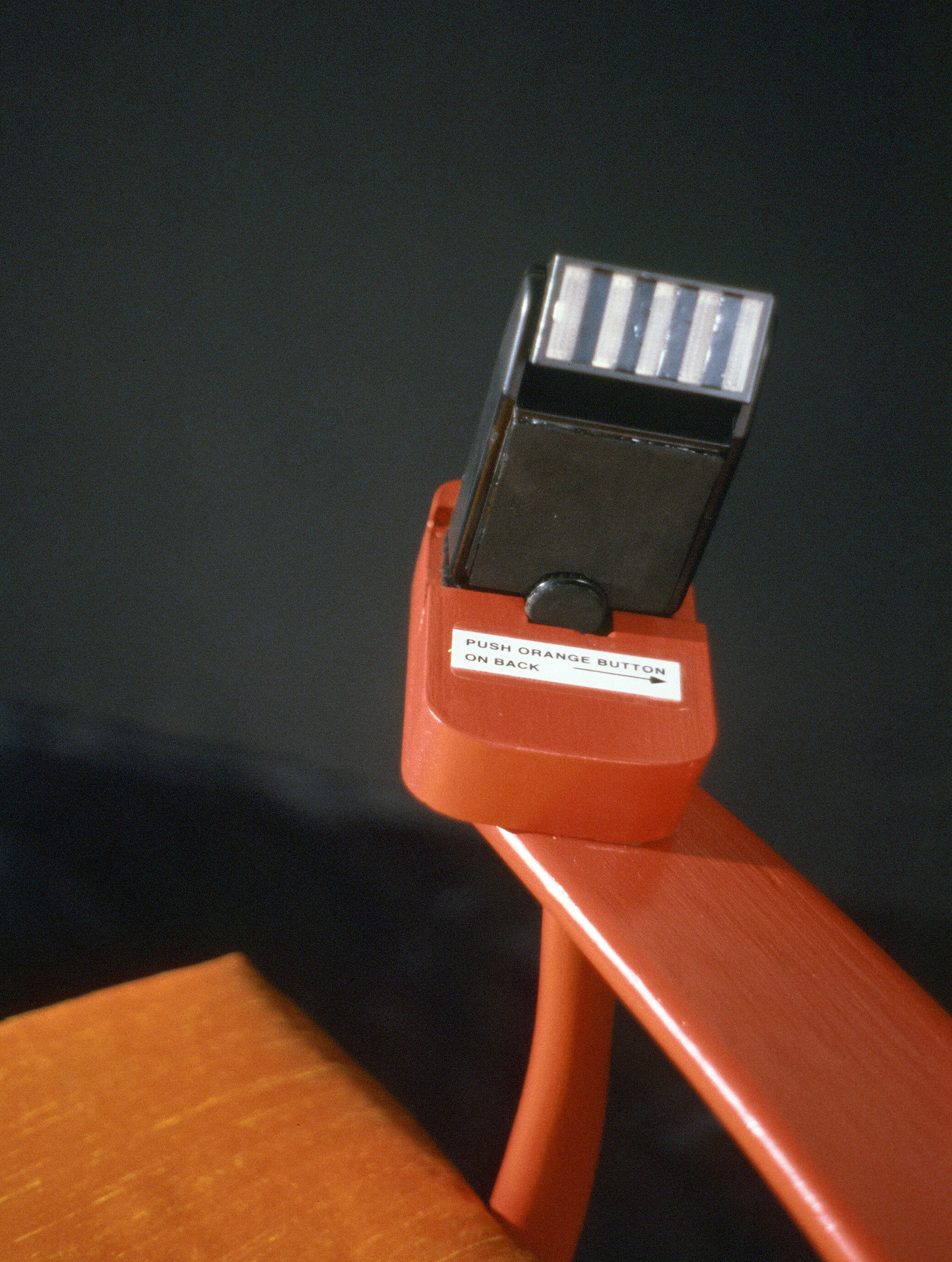
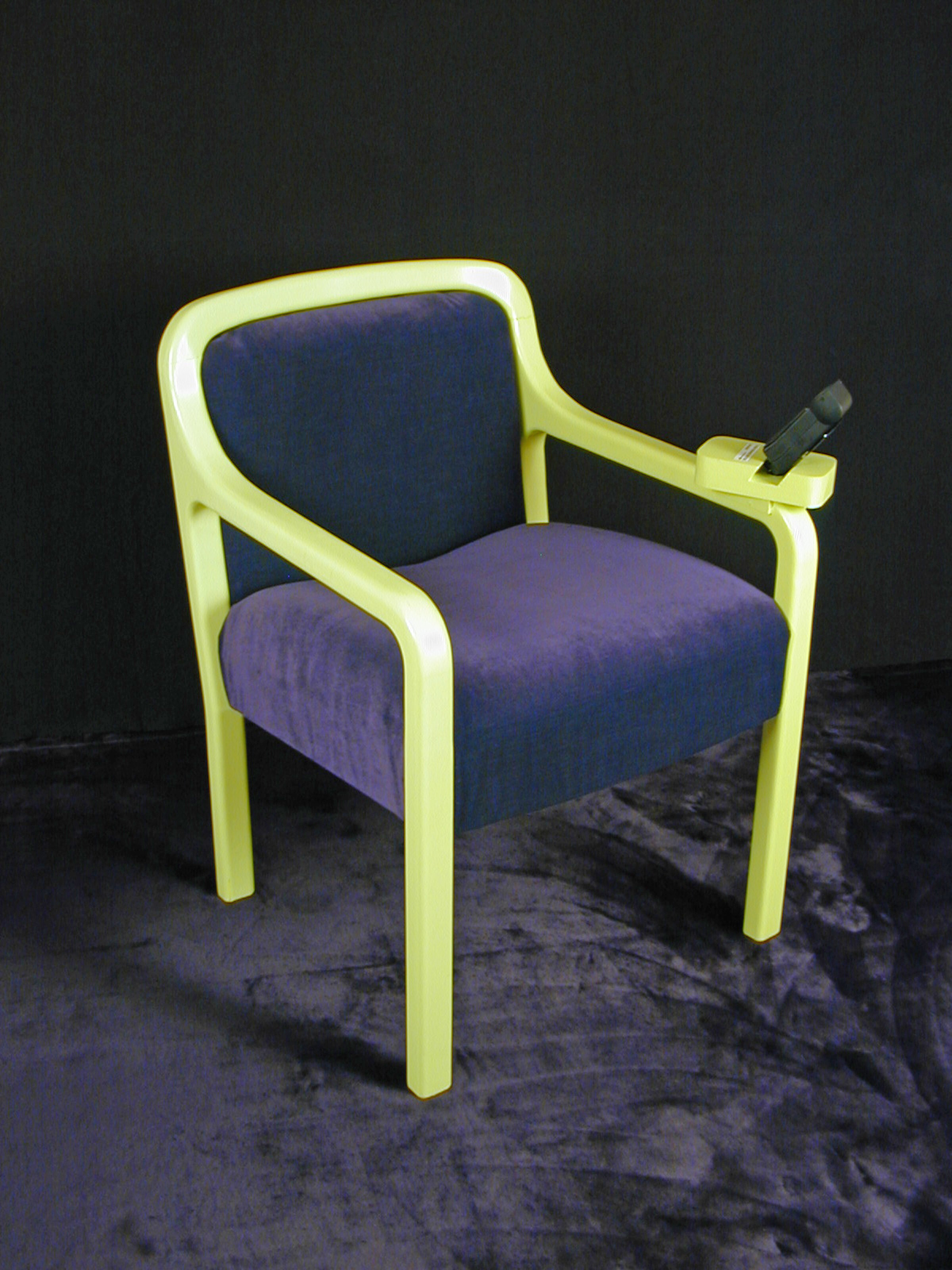
We Carry Our Prisons With Us (#2 & 3, 4 & 5), 2000
This series of chairs connects to the earlier Prisons installation, each having a flash unit built into its arm. The viewer presses a button to see the flash, and then sees the afterimage of the flash. In this series, the afterimage is one of vertical bars, seen everywhere the viewer looks, hence the title, We Carry Our Prisons With Us. A mirror is shown with each chair, allowing the viewer to see him/herself through prison bars.
Materials: wood, fabric, paint, photoflash
#2 & 3, black and white shown at RARE Art, NYC, 2000, #4 & 5, orange and green shown at PS 122, NYC, 2000
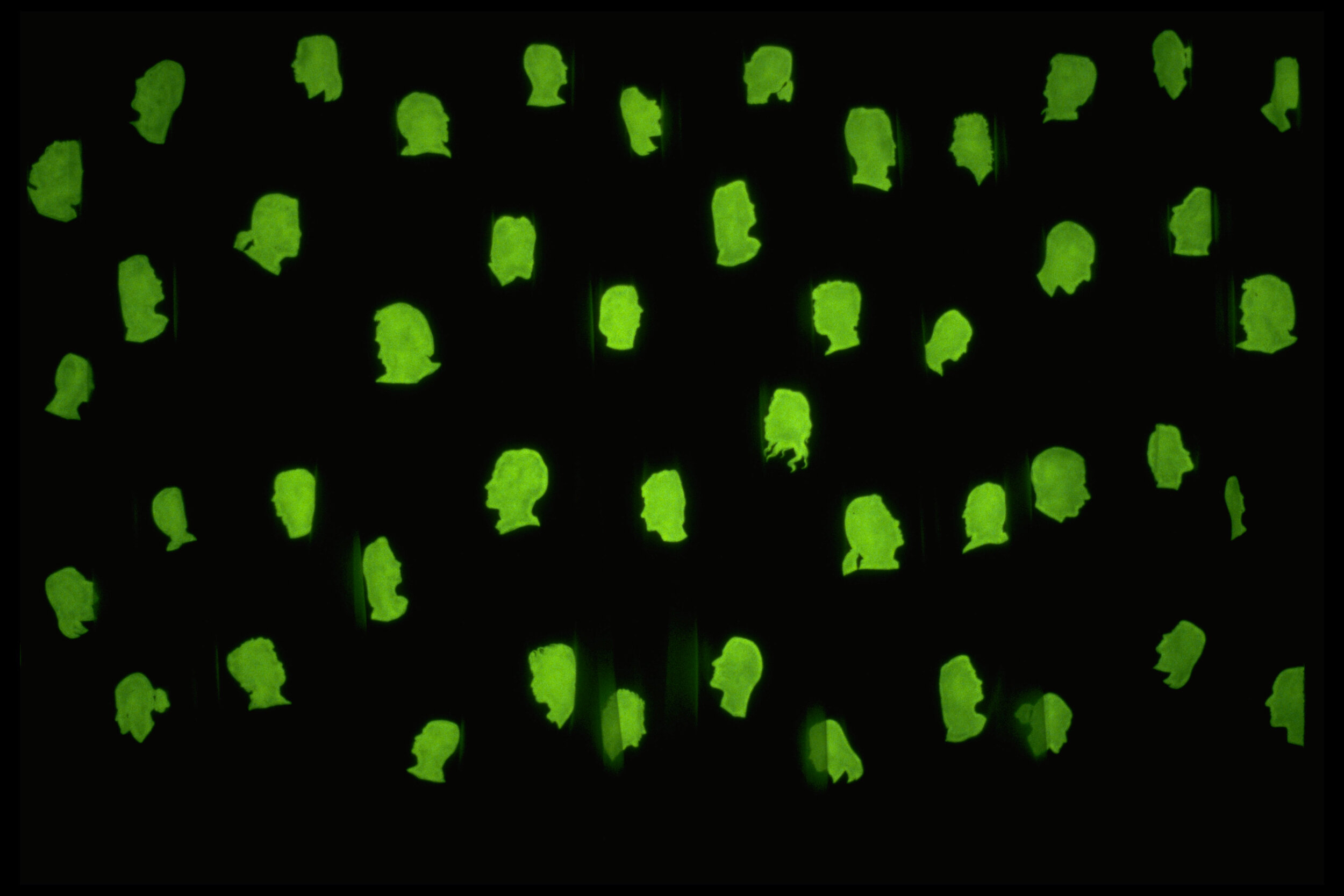
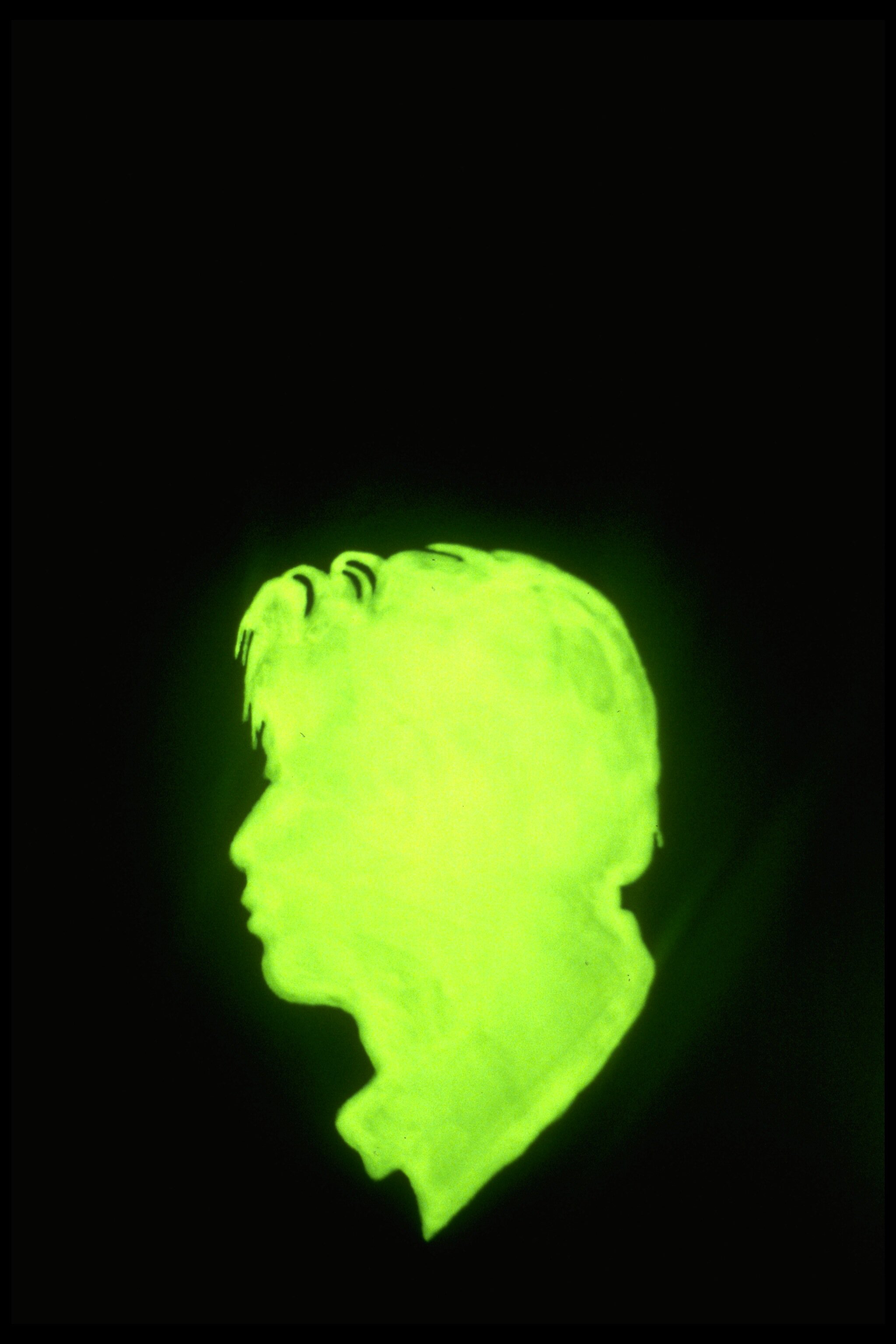
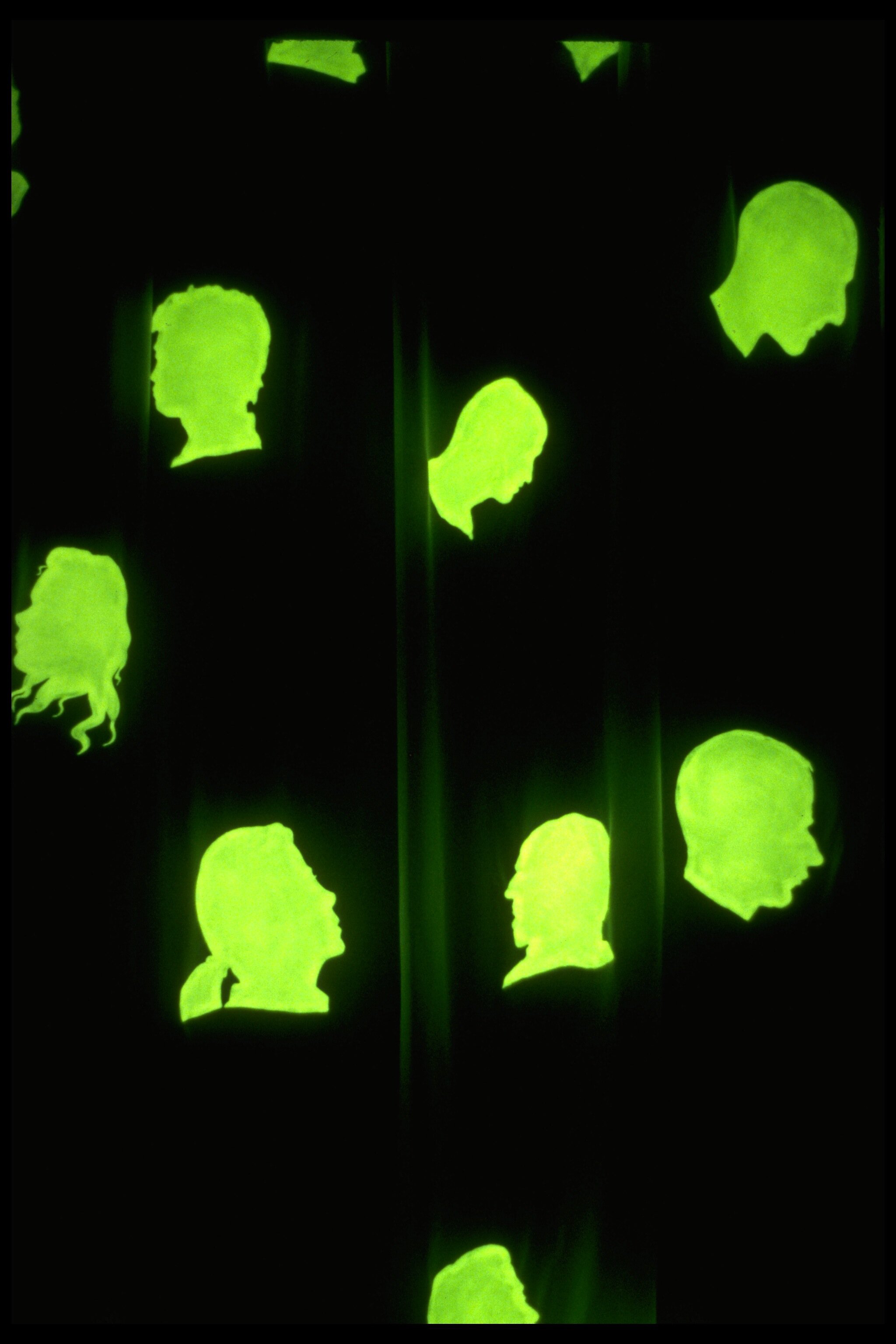
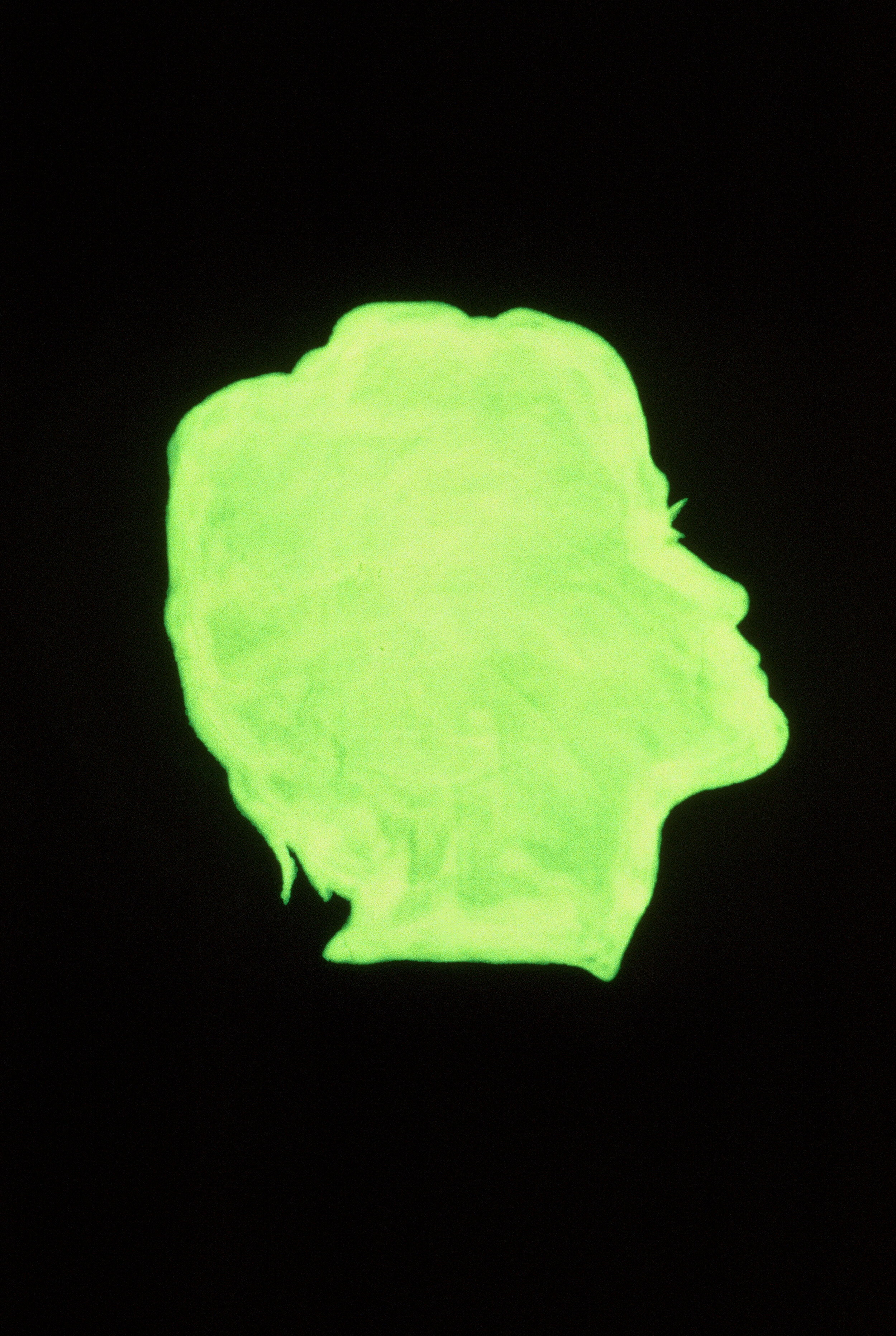
By Heart, 1995
This installation mixed sound with phosphorescent images painted on a gauzy scrim, which moved in a slight breeze. Intense lights alternated on and off in a darkened room. When off, a soundtrack played, consisting of a single voice answered by a chorus of whispers. The content deals with the interaction between self and other, how our identity is reflected by others and how this affects our knowledge of ourselves, using questions posed by the single voice and answered by the whispered chorus. Images are silhouettes drawn of people in my life and painted onto the scrim. When the lights are on, the phosphorescent images are reactivated, glowing freshly in the dark as the lights go off and the sounds go on. Quote from a fellow artist, after viewing the work: “This is a perfect piece.”
Materials: paint, light, scrim, projector, sound, fan
Size: variable, approximately 20' x 20' room
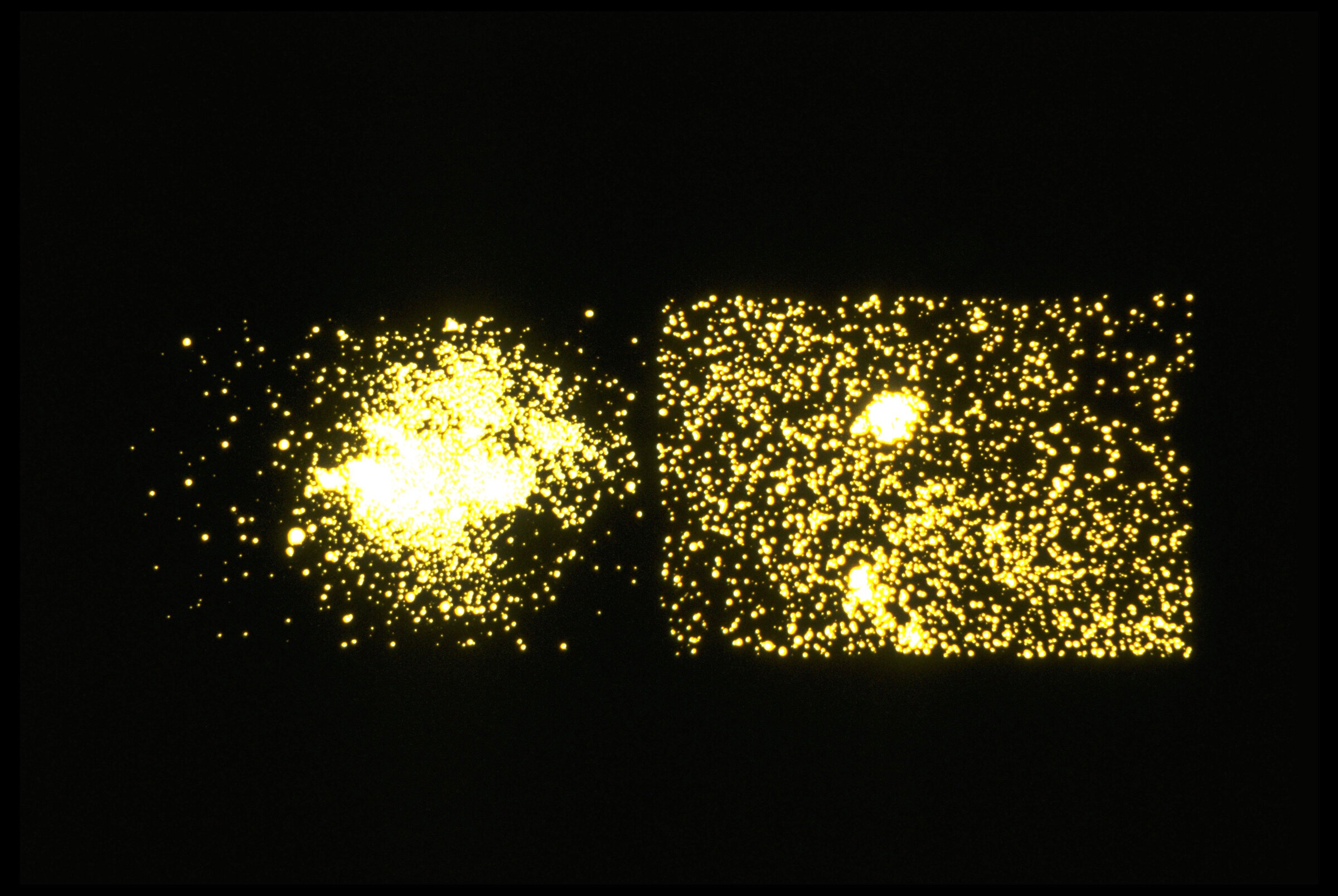



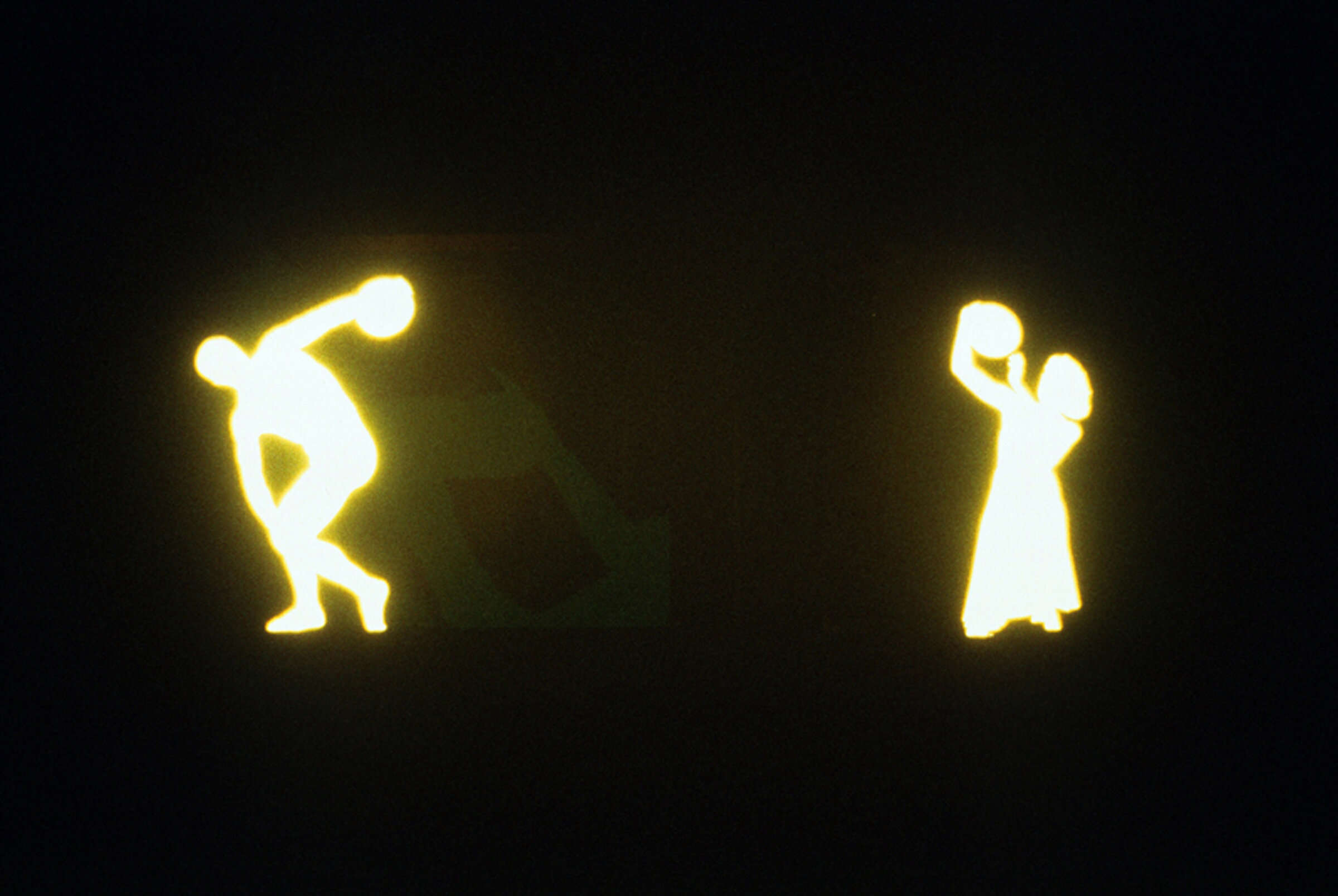
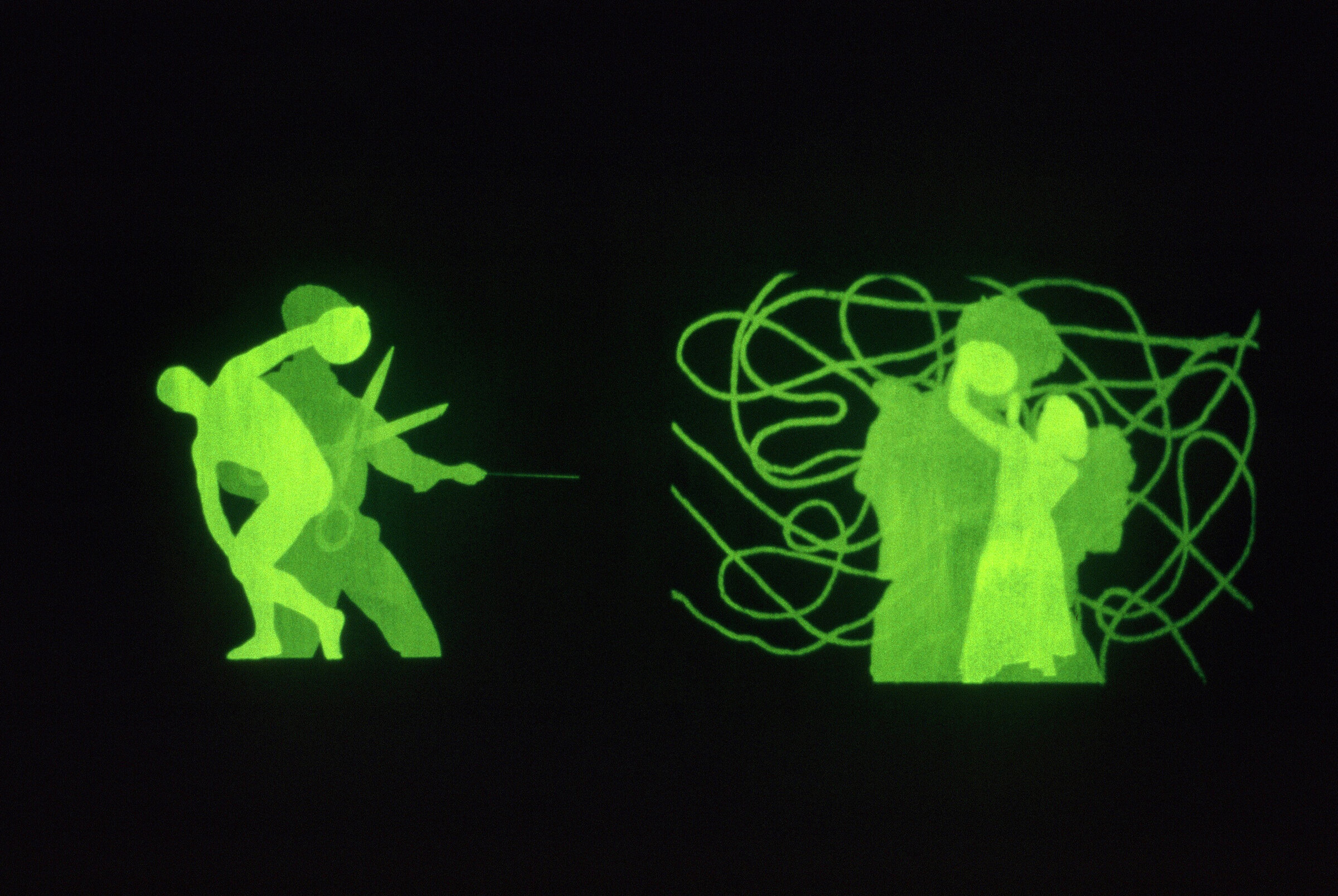
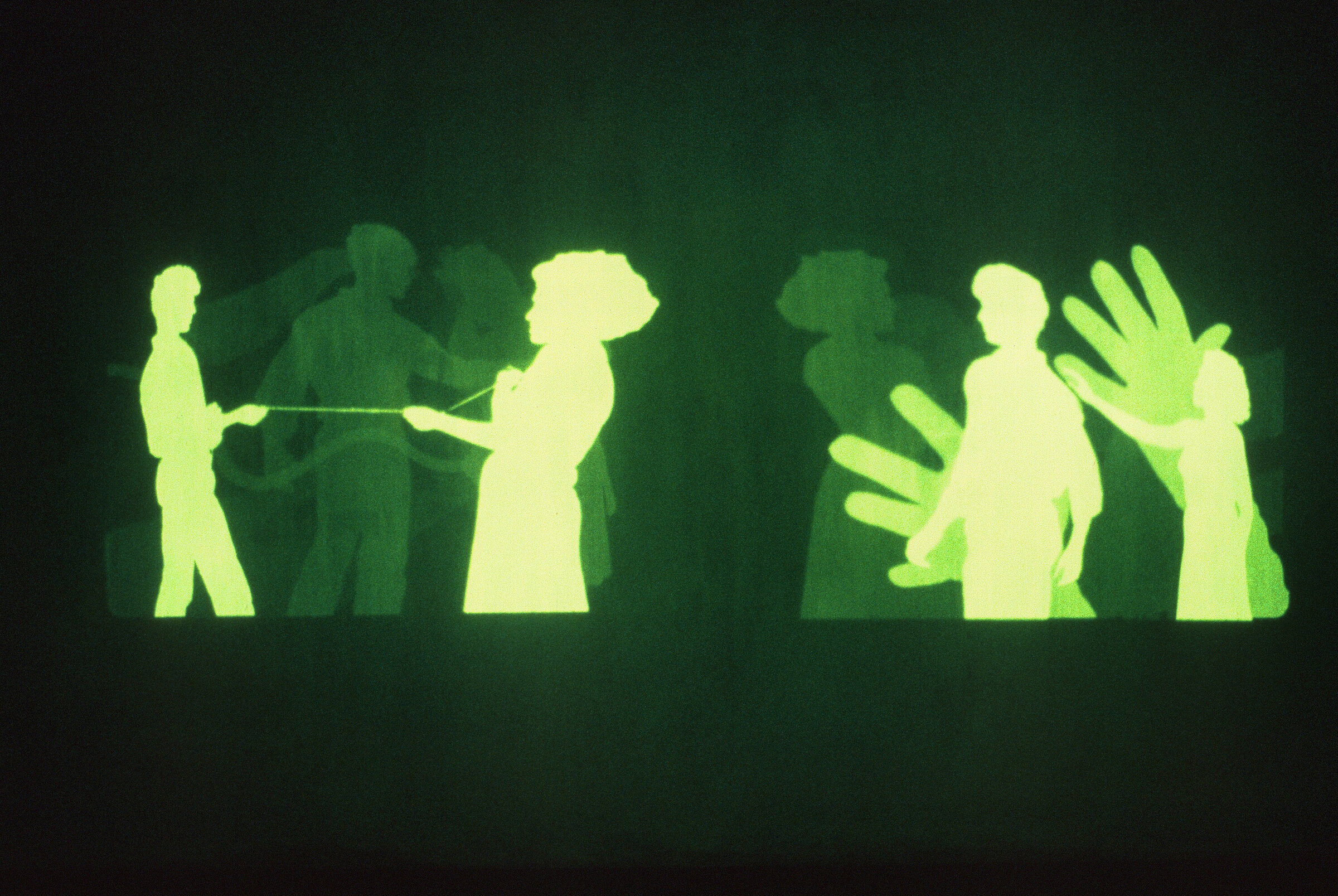
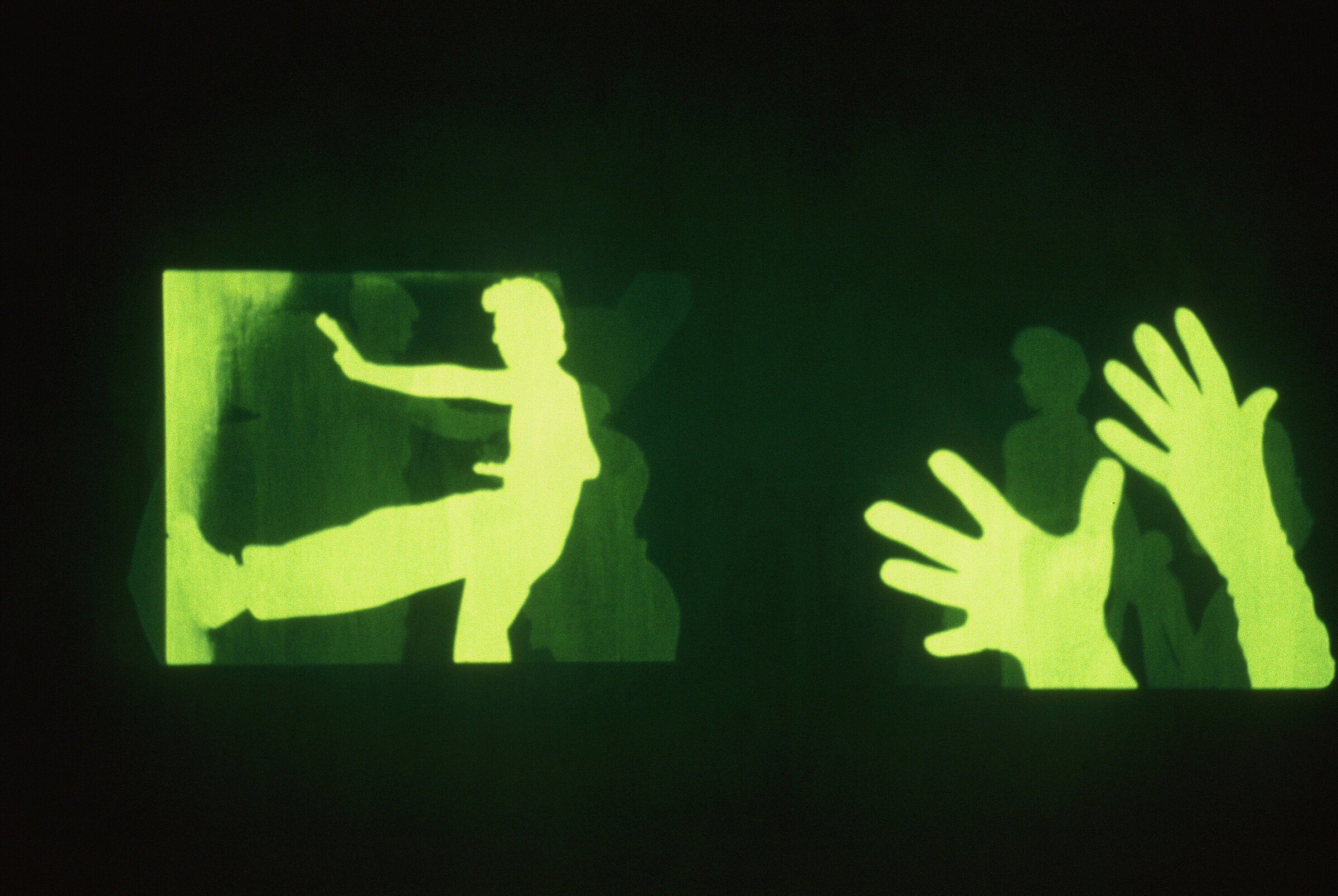
To Meet, To Meet Again, 1987
Slide images using white light are projected onto the phosphorescent screen, going on and off. When off, the image remains visible, held by the phosphorescence of the screen. As they slowly decay and disappear, fresh images are applied. This build-up and disappearance is analogous to memory, sometimes precise, sometimes fading, presenting almost a hallucinatory set of changing images. The text consists of fragments of dialogue between couples, as well as brief monologues by women and men. Psychoanalytic motivations are evoked, including references to early relationships, aggressive impulses, and sources of desire. Fading in and out between texts are fragments of music and sound which reiterate obsessions with attaining/failing to achieve gratification. This was the first piece adding sound.
Materials: projectors, multi-track tape recorder, programmer, phosphorescent screen, 24 minutes
Premiered at BACA Downtown, 1987, shown at Dixon Place, NYC, 1990, and at The Knitting Factory, NYC, 1990
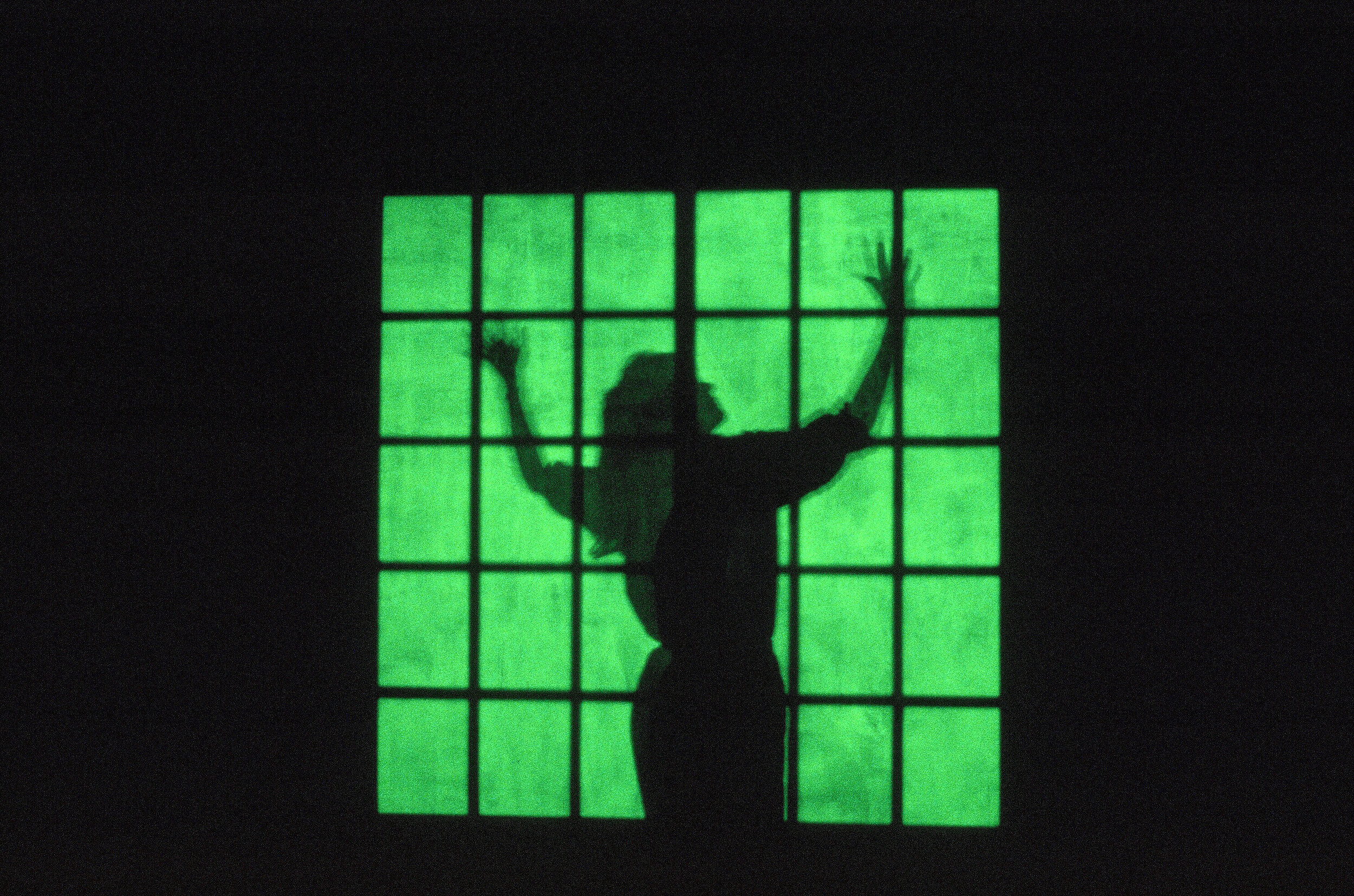
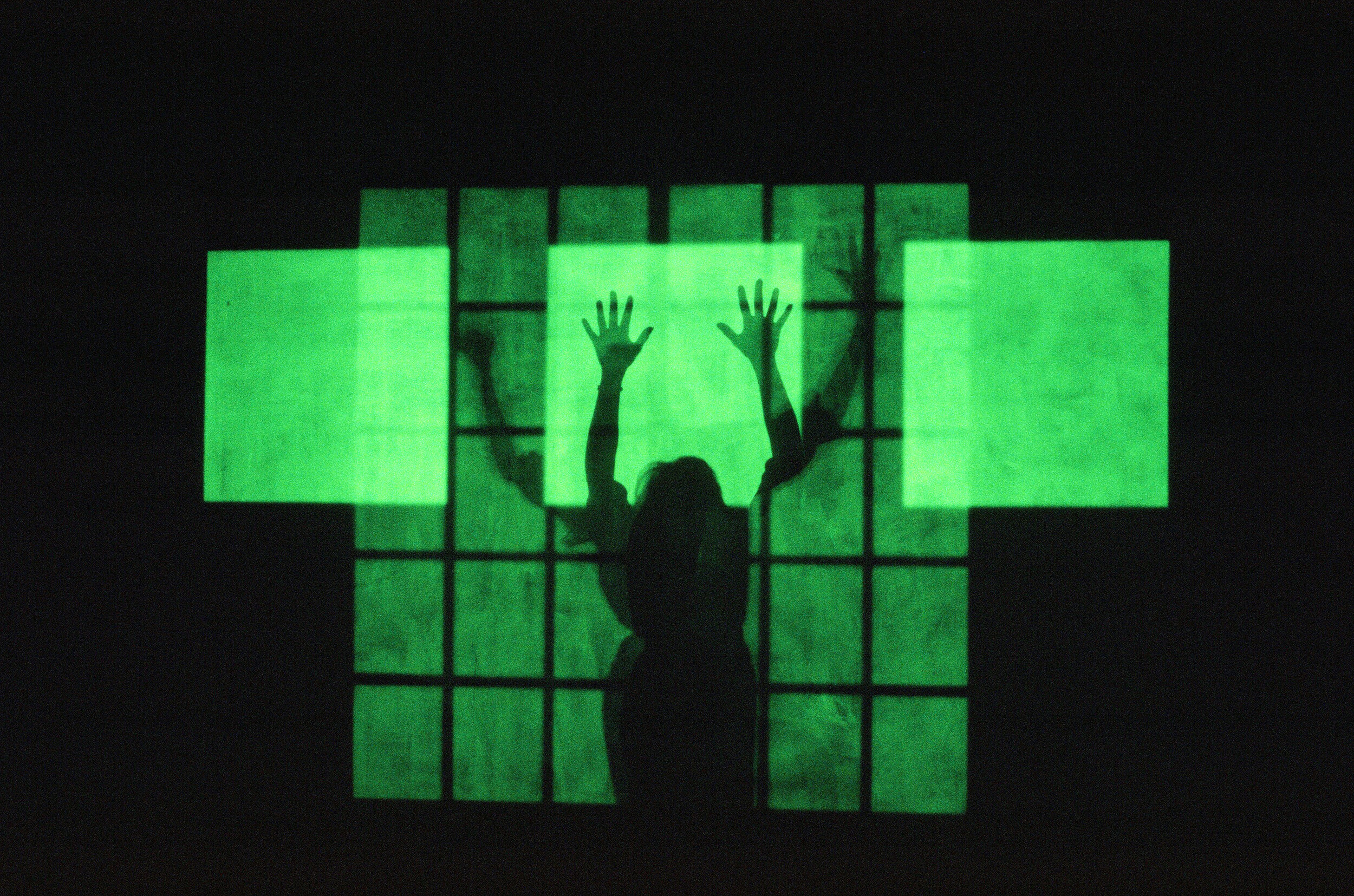
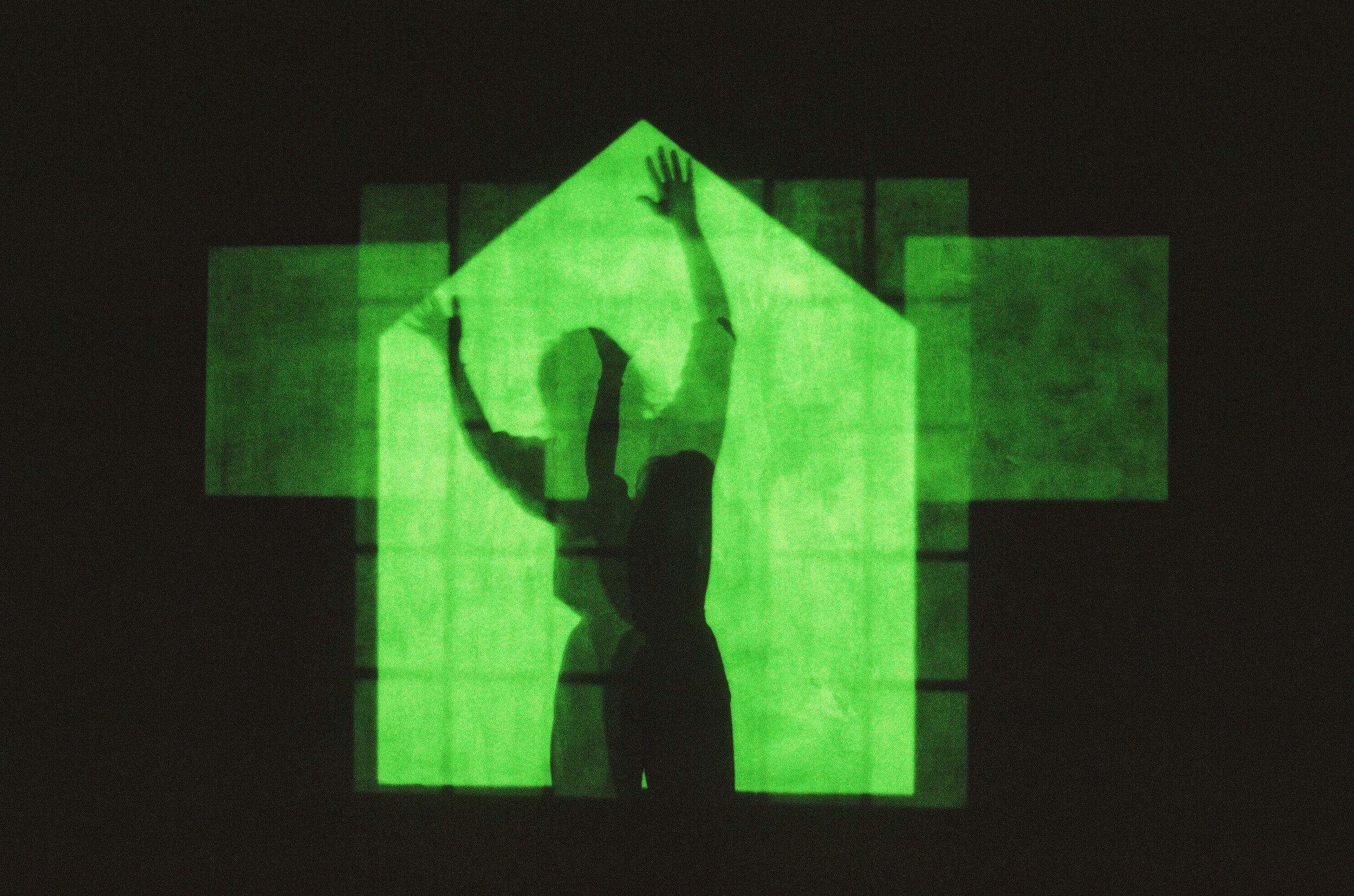
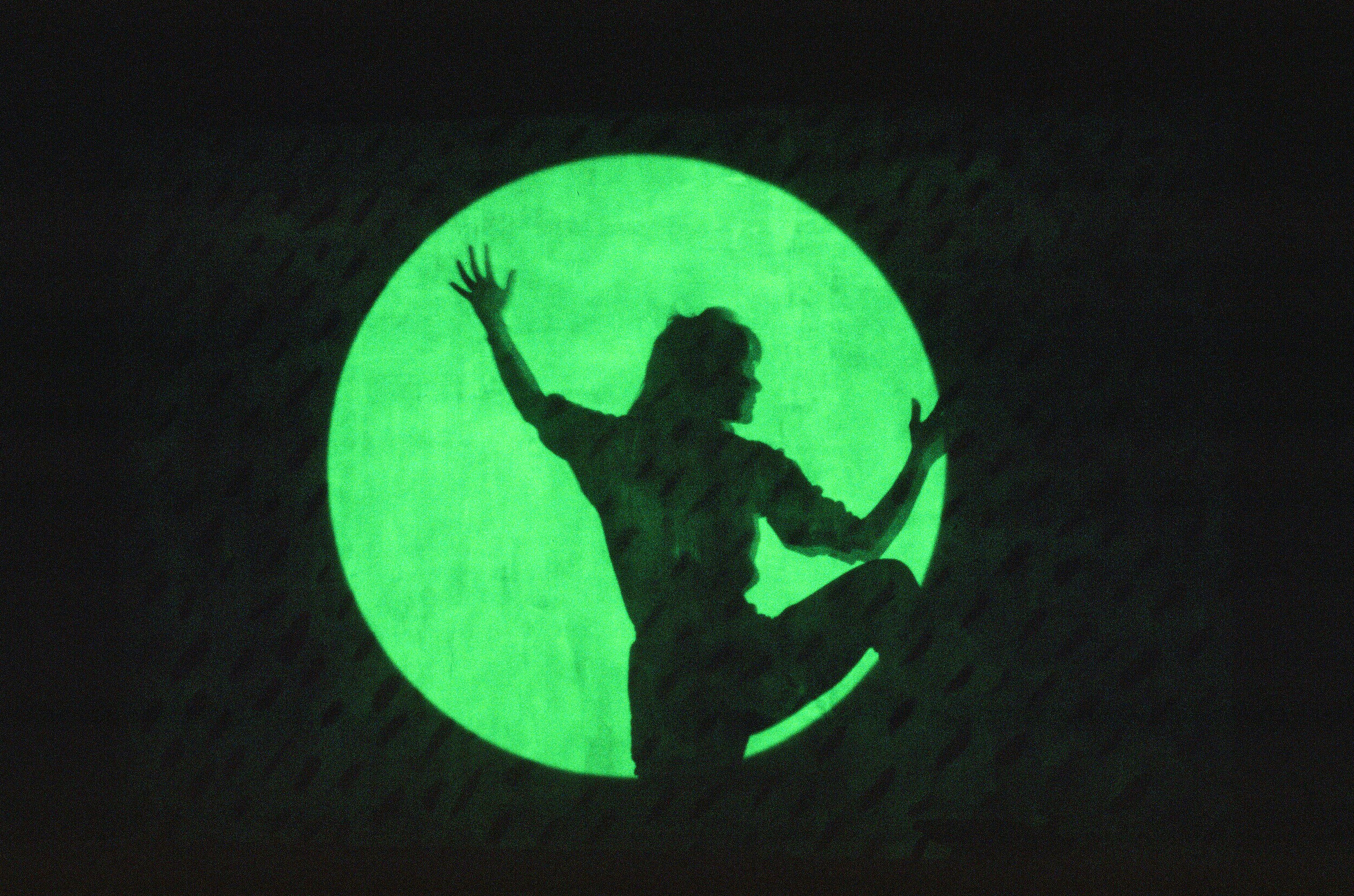
Backtrack, 1985
Changing slide images of silhouetted backdrops are projected onto a phosphorescent wall using clear light. The projected image alternates with moments of darkness. As viewers walk through the darkened room, passing through the projected light, their silhouetted figures are captured on the wall. These images are caught on the phosphorescent wall, brightly visible in the intervals of darkness. Layer after layer of projected images builds up on the wall surface like a collage, the older images gradually fading as new ones are applied. The first three frames illustrate images building up. This process creates rich layers of glowing multiple images, composed of light, changing and moving with time. This is the first piece adding the phosphorescent screen with projected images.
Materials: paint, light, projector, slides
Shown at BACA Downtown, Brooklyn, 1987, Hudson River Museum, 2002, Flavin Symposium, Chinati Foundation, TX, 2001

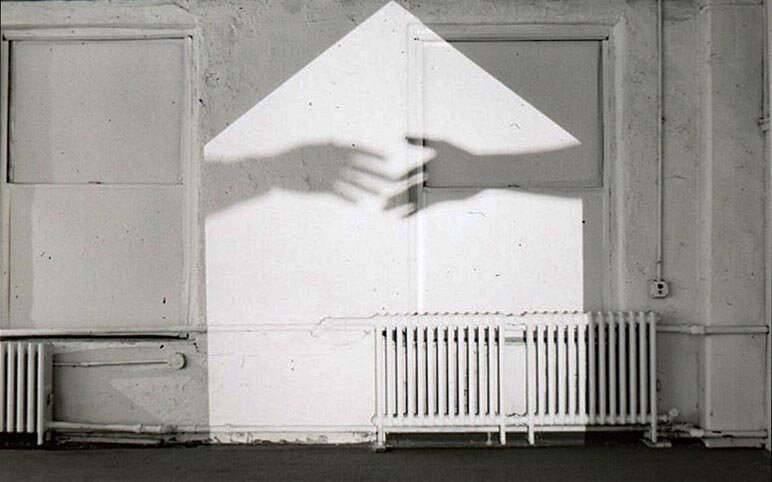
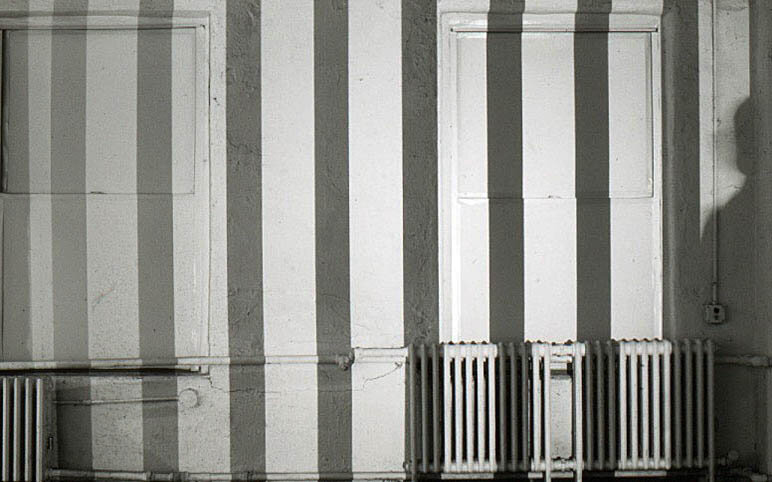
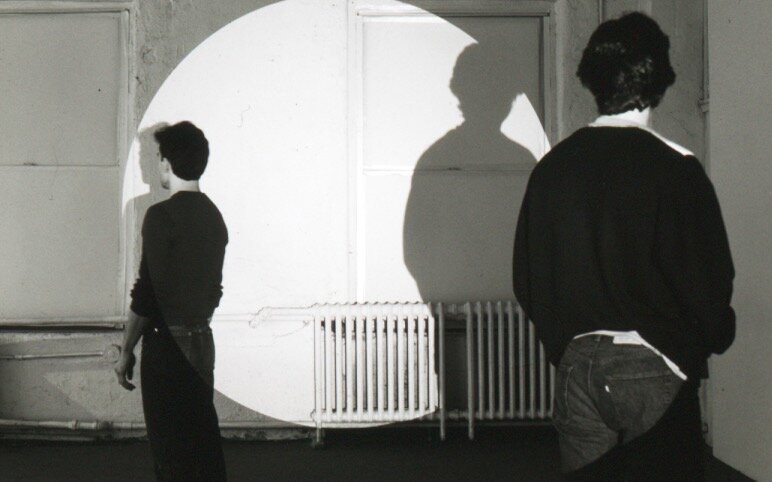
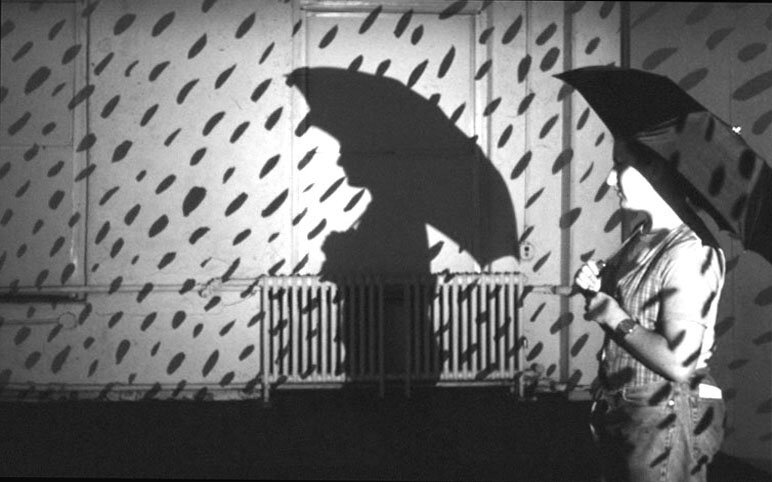
549 W. 52nd, 1984
This projected installation was installed so that viewers had to cross through projected light to pass through the space. As they did, their figures became part of the work. The projections were backdrop images, ready to receive the moving silhouettes of the participants. Some viewers raced through, trying to avoid their silhouettes, while one fellow spent the entire opening watching his own figure. This was the earliest piece using projected light.
Materials: kodalith, projector, wall, light, people
Shown at Women's Interart Center, NYC

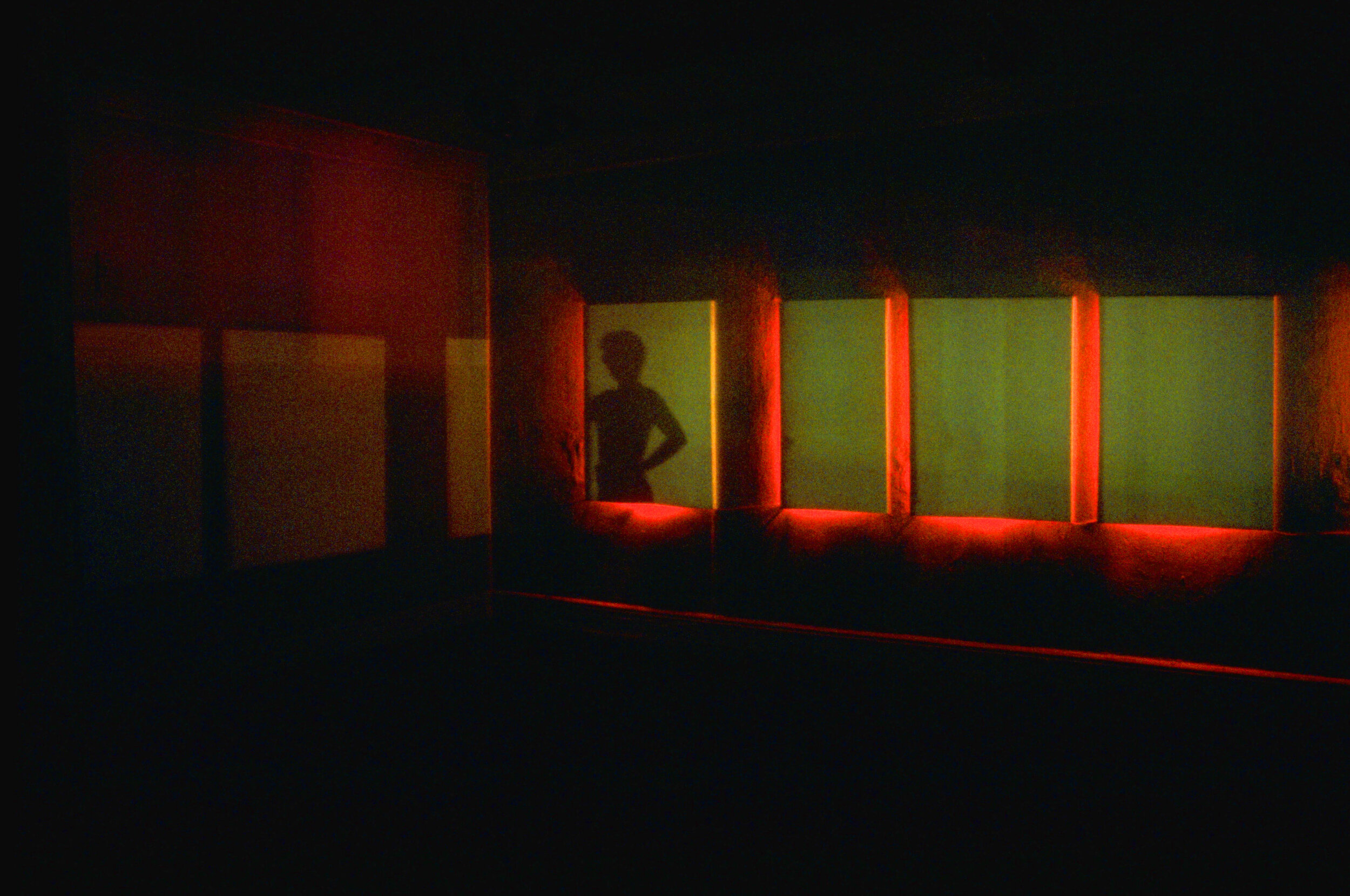
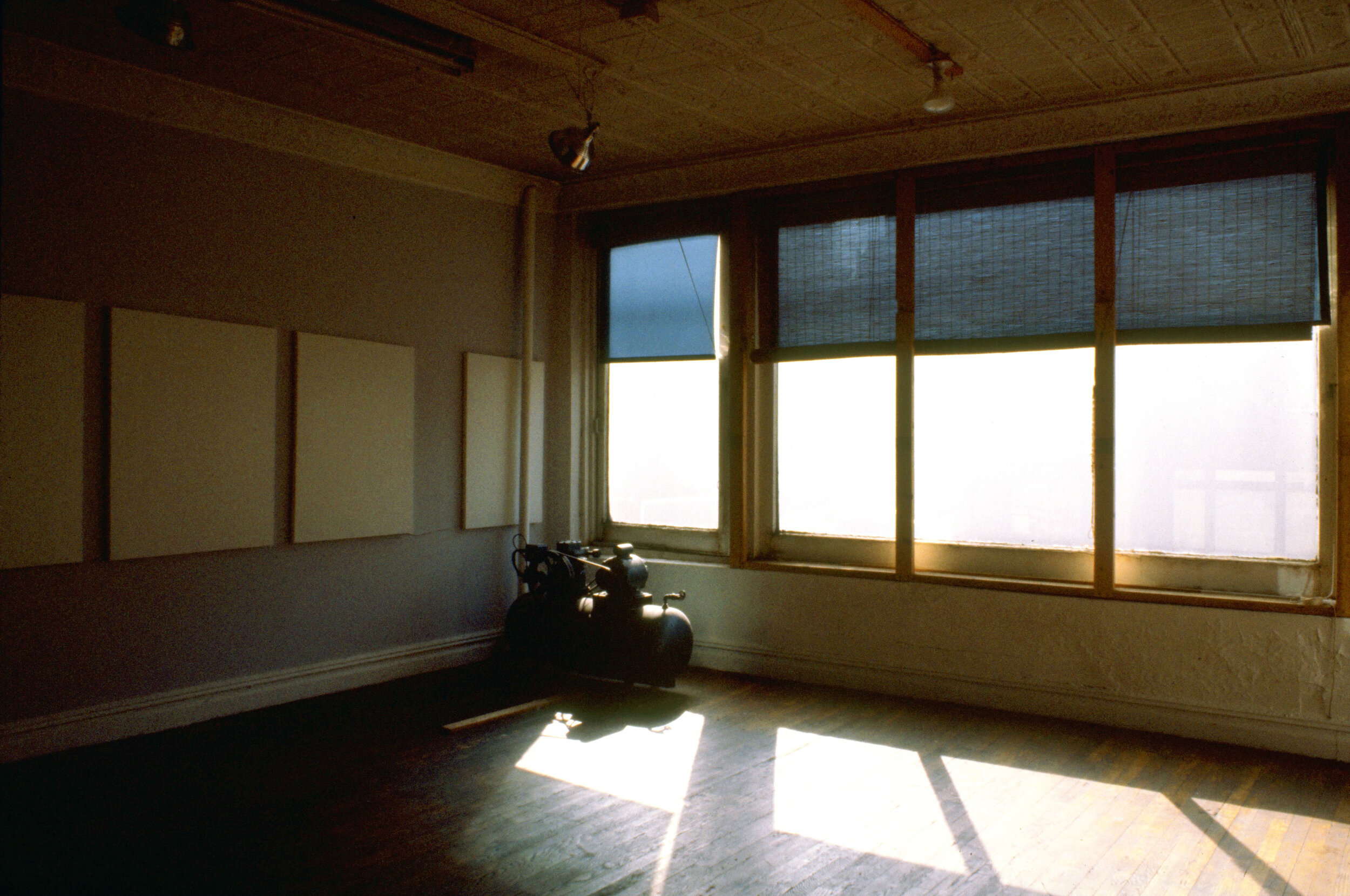
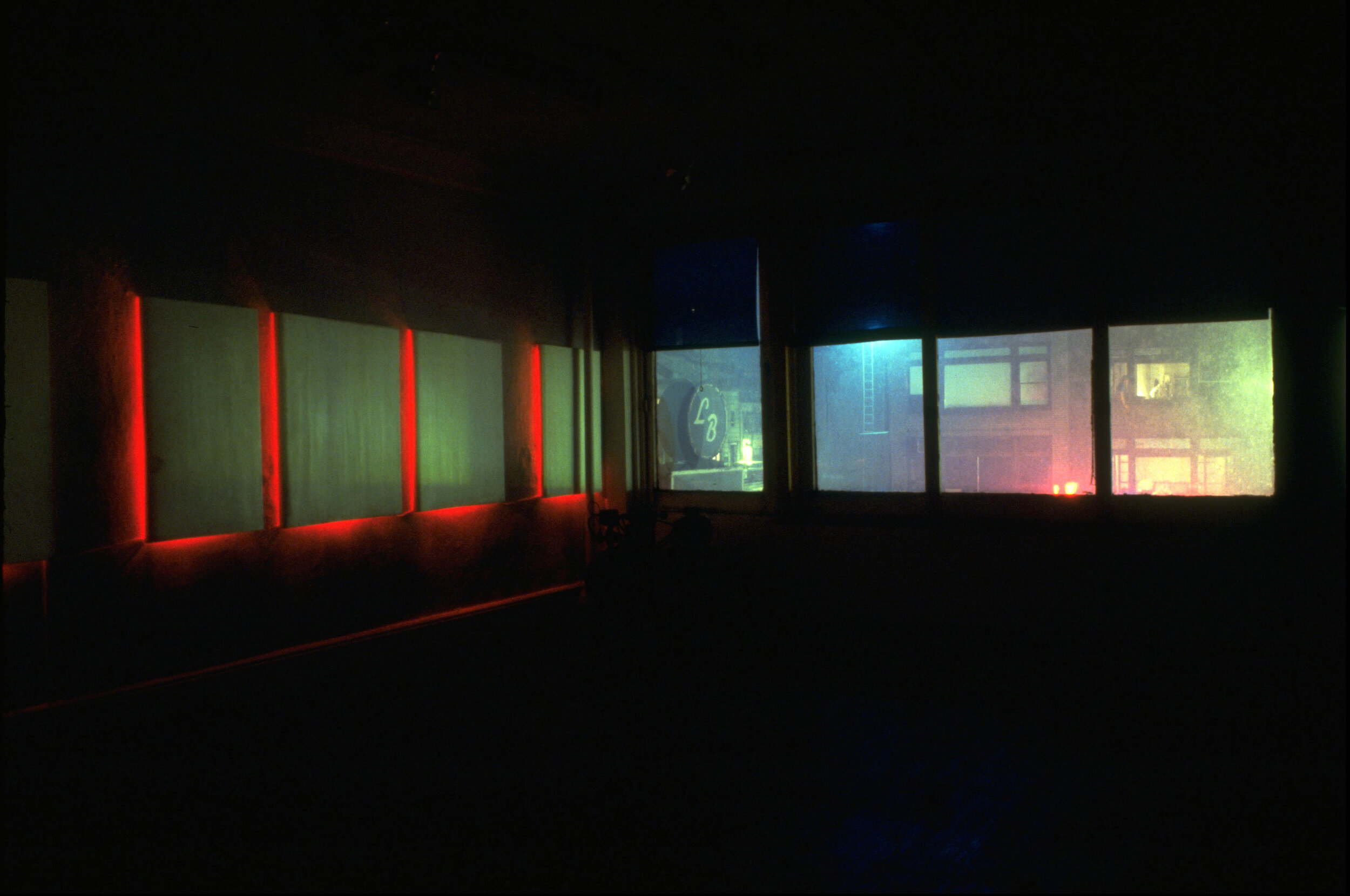
230 Seventh Ave, 1981
Two different views here, each shown first in the daytime, then at night. The rectangular white images on the walls are shapes cast by light entering the windows at night. Cast light images are painted onto one wall, but made into flat white boxes resembling paintings on the other wall. At night, red light emerges from under the white boxes. When a person steps between the window and the wall, the light is intercepted, and a silhouette is cast on the white shapes. In the daytime, the work appears to be a series of white paintings, some directly on the wall and some having depth. This was the first piece using the silhouetted figure, and the first piece using day and night light.
Materials: paint, wood, electric lights, night light, windows, walls
Studio, NYC